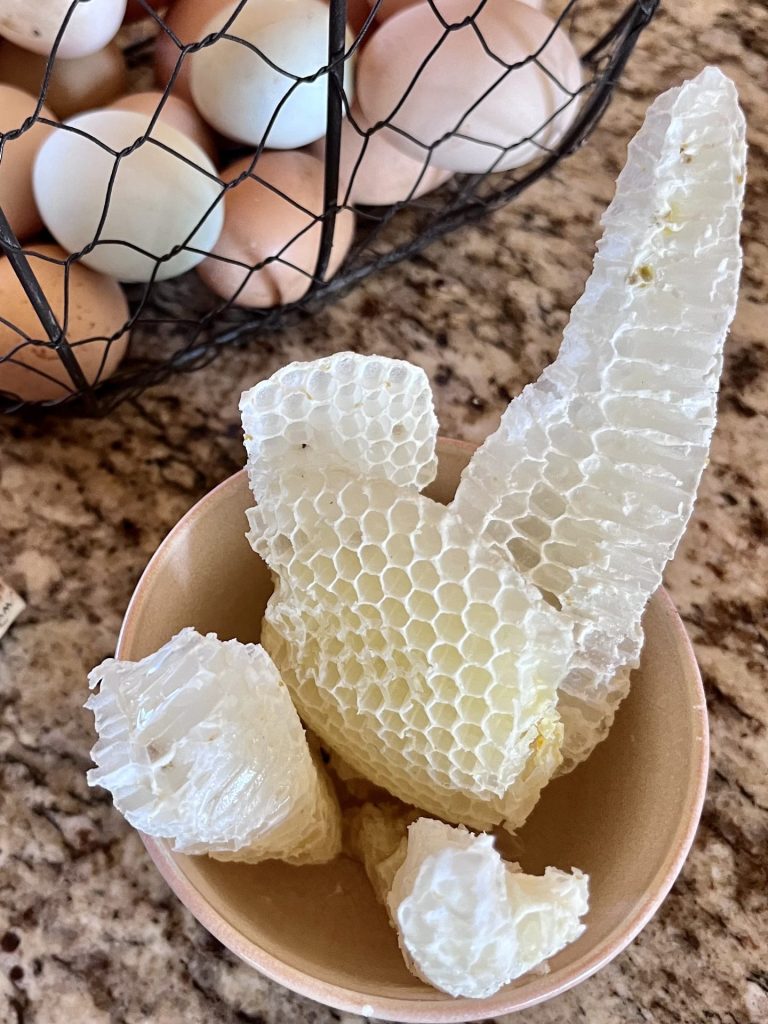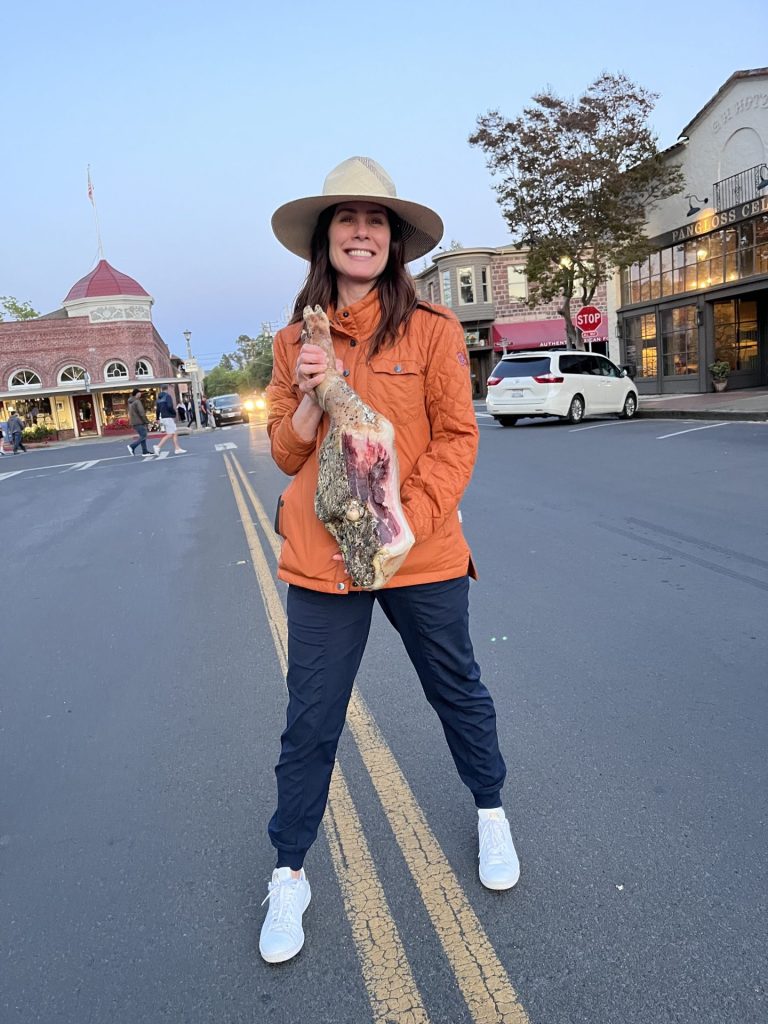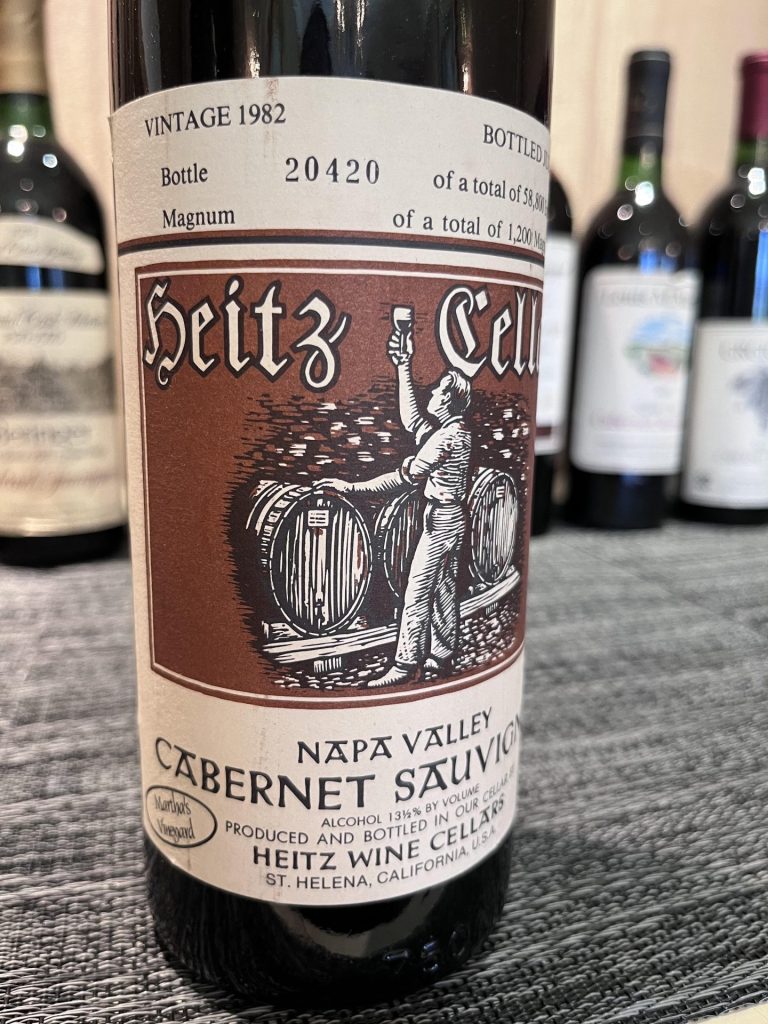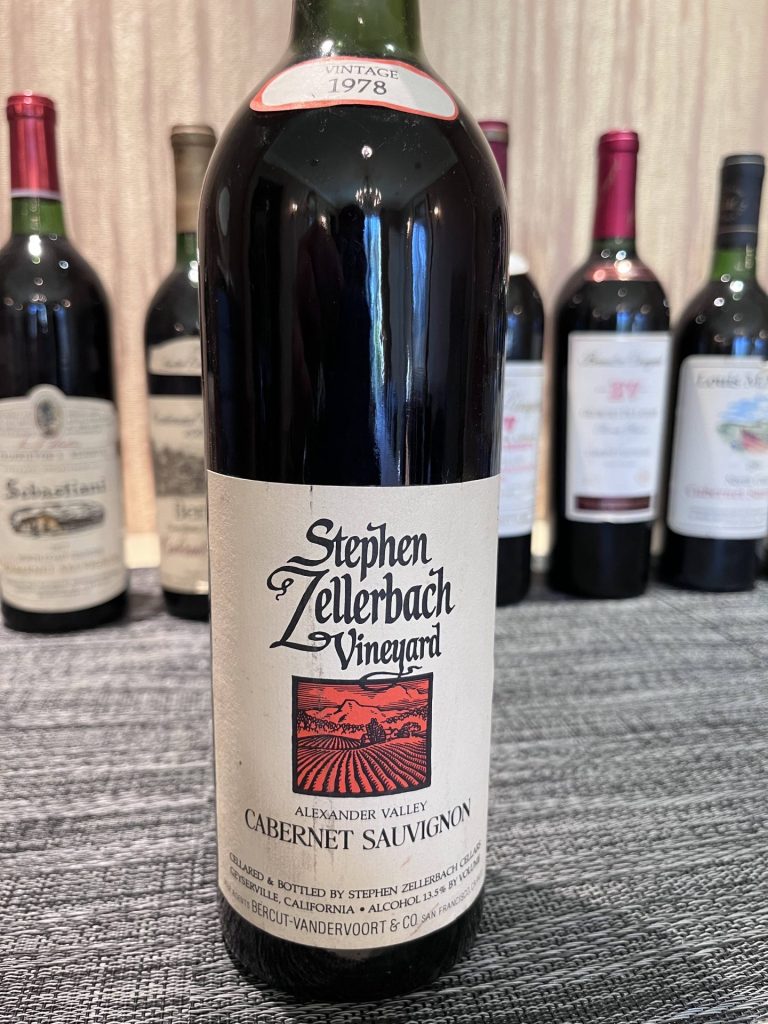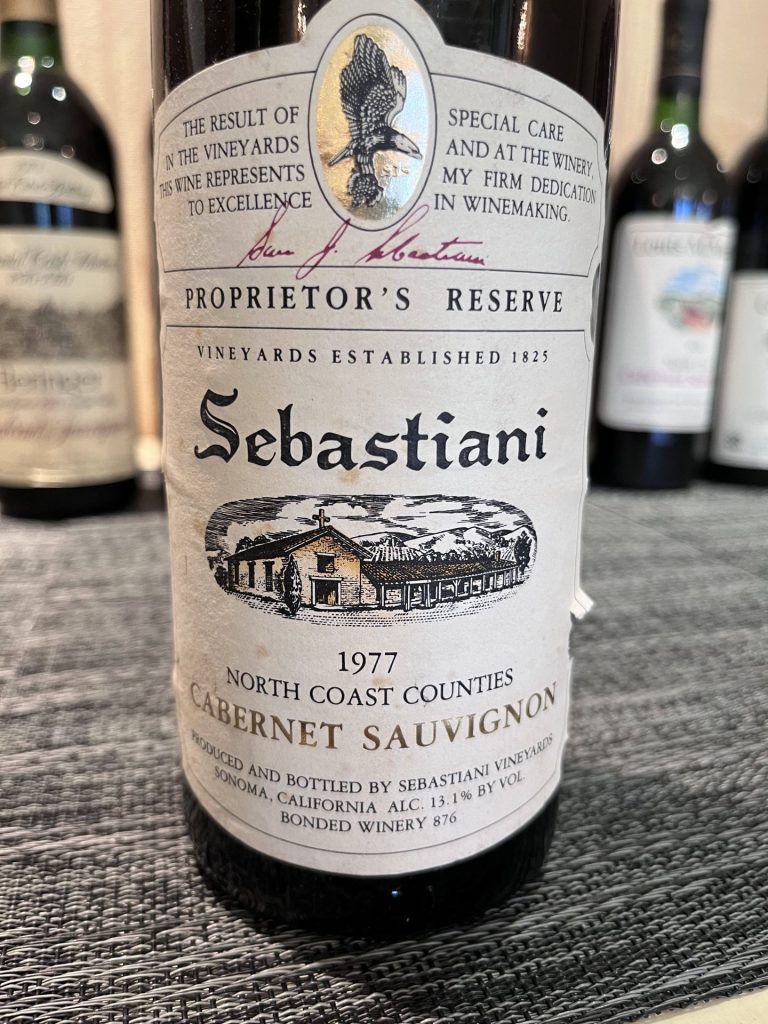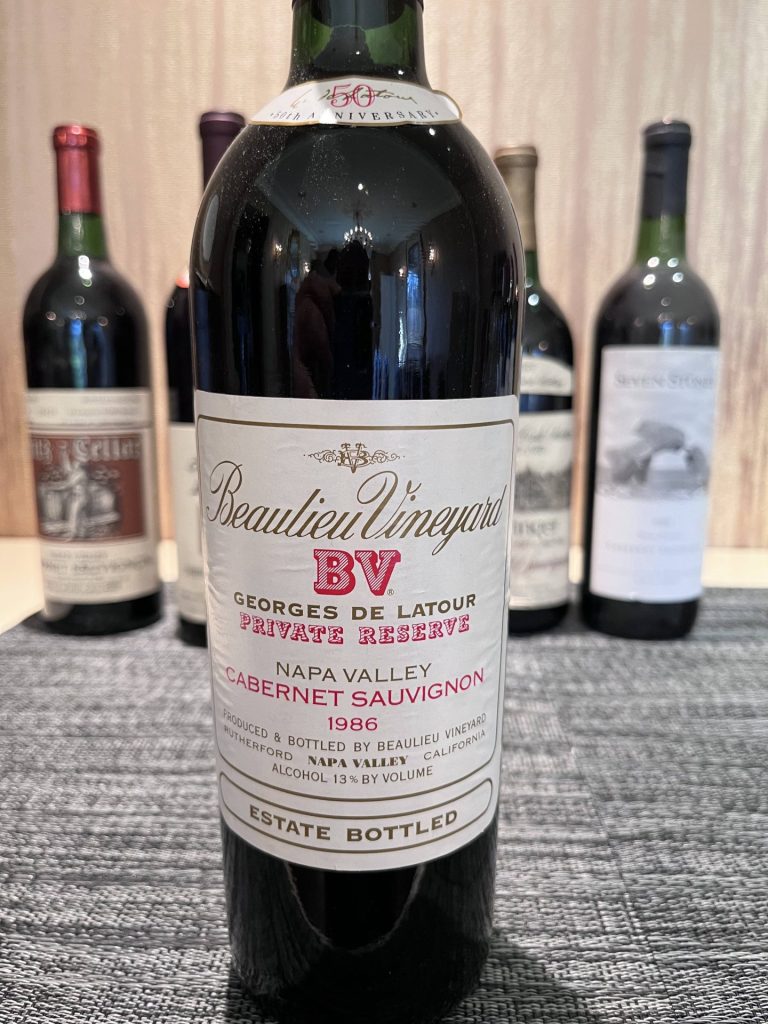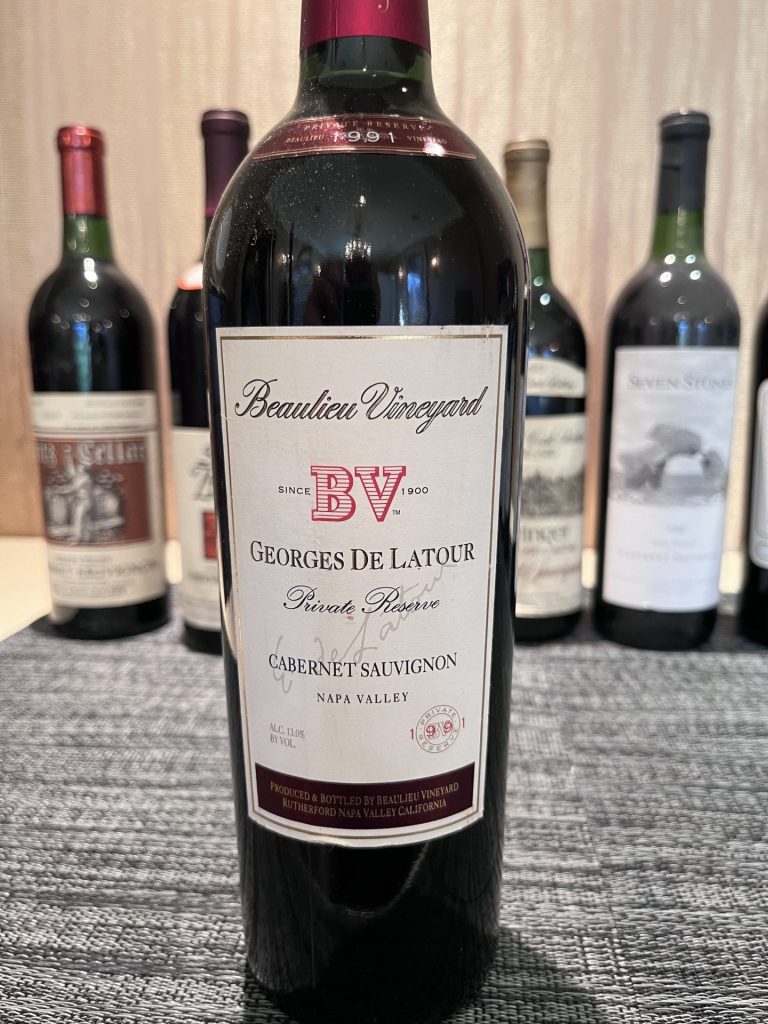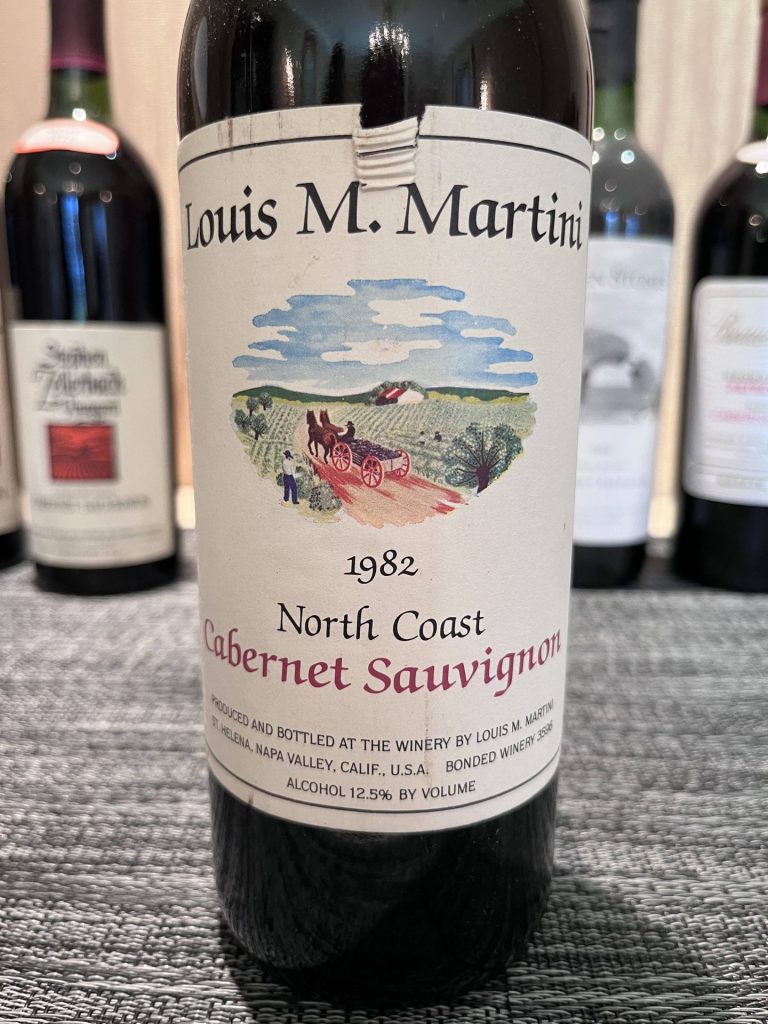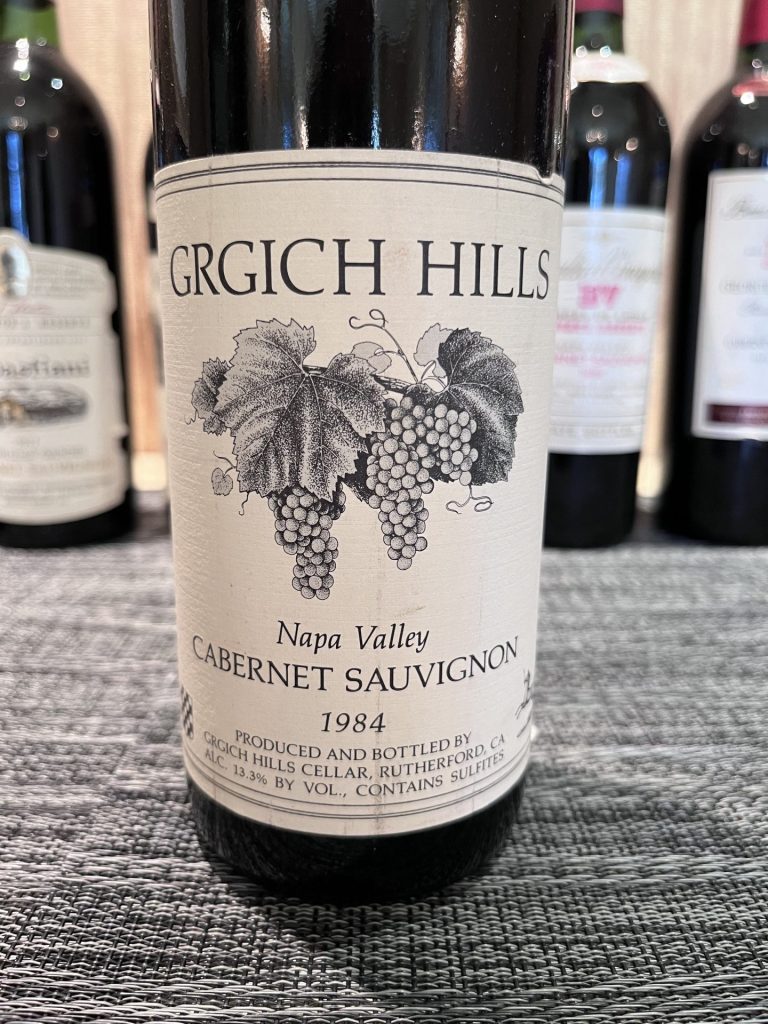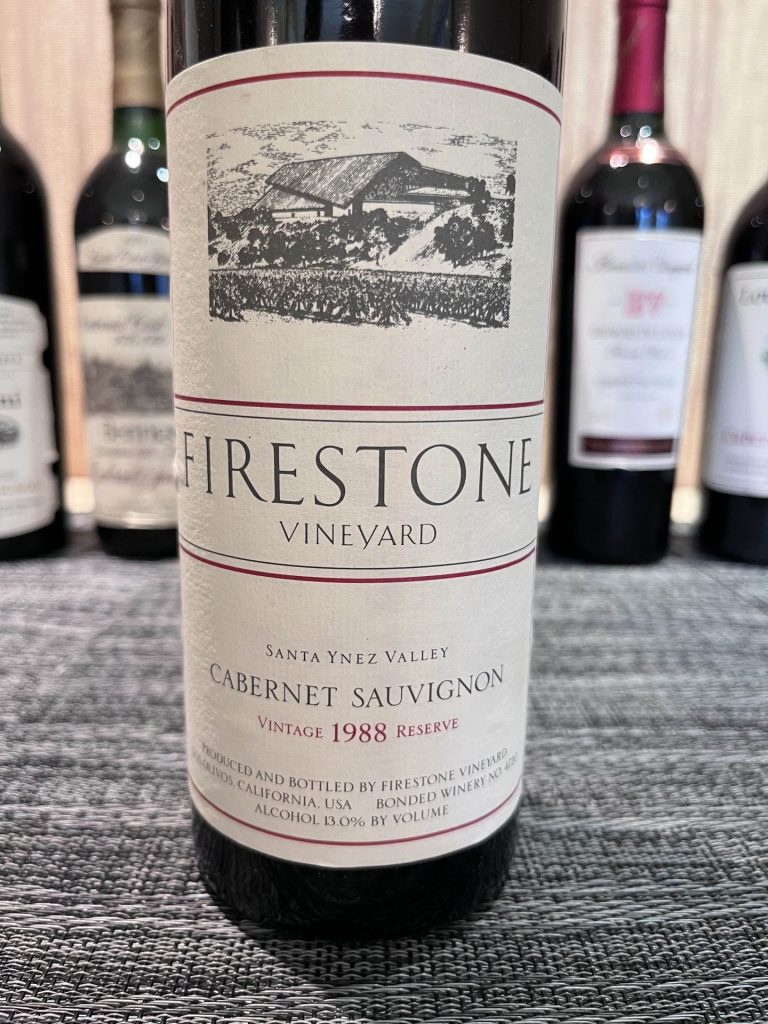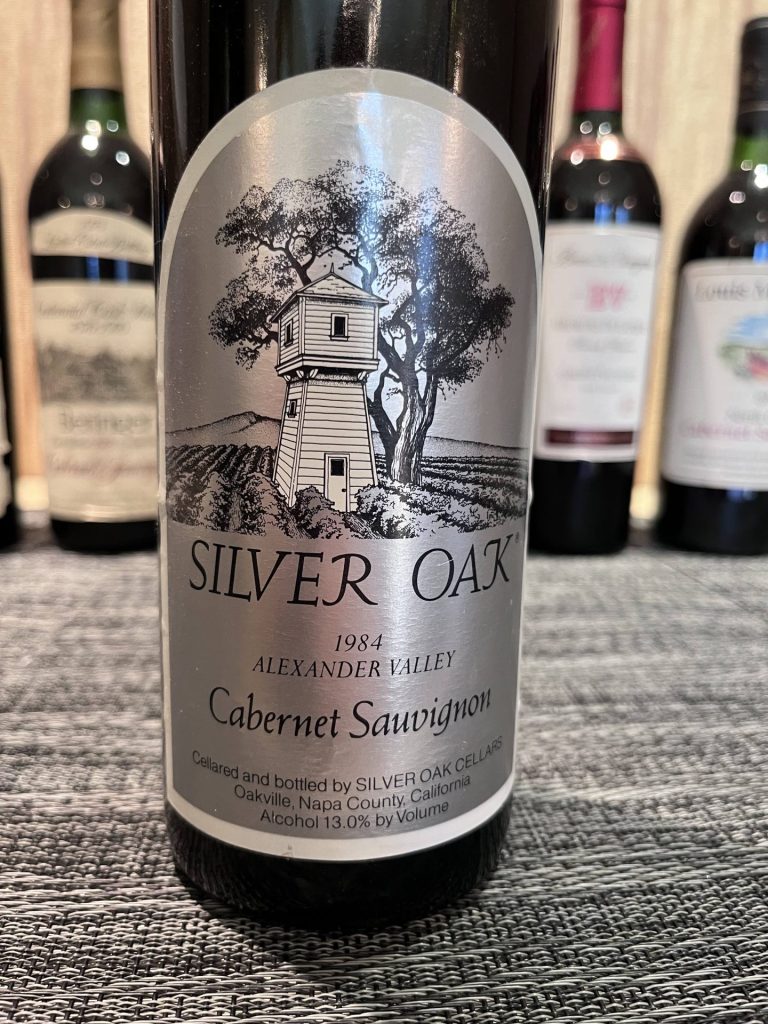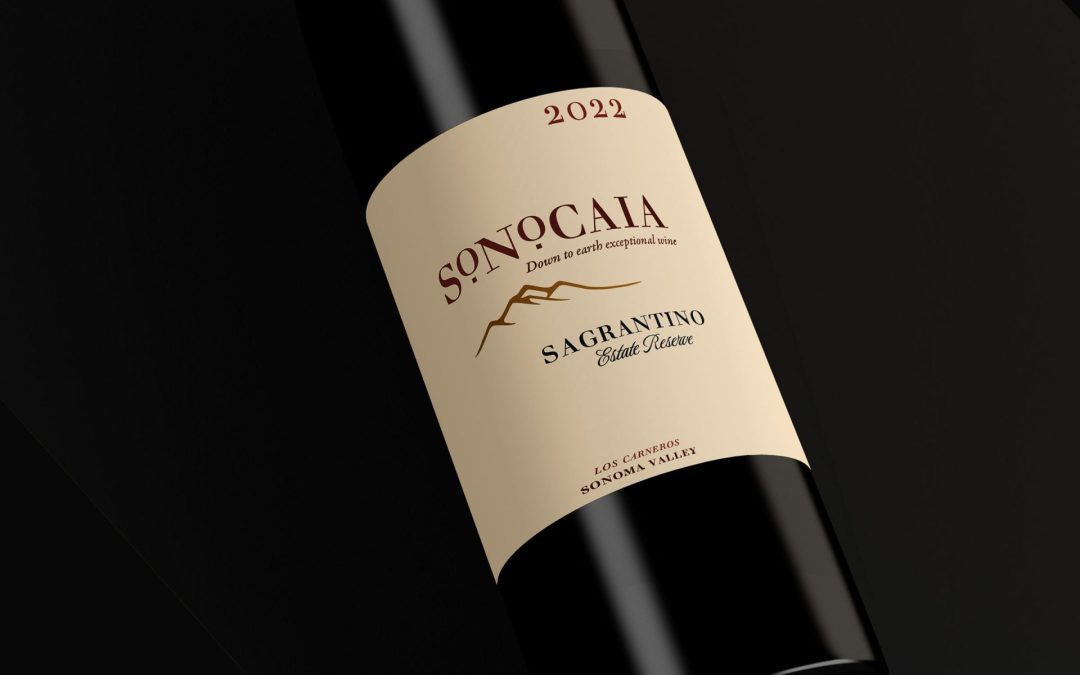
Jul 8, 2023 | Sagrantino, Sonocaia, Sonocaia Estate, Sonocaia Estate Vineyard, Sonocaia Winery, Sonoma Farming, Sonoma Valley

Coming soon – your invitation to the newest boutique winery in the Sonoma Valley
You are currently a subscriber to our about-to-launch Sonocaia Winery (you’ve known us for years as Hydeout Sonoma and Dysfunctional Family)
And you are first in line for an invitation! Keep an eye out for subsequent emails like this for your invitation.
If you are seeing this in an email directly from Ken or in social media, you are likely NOT on our list. Please click this link: Sonocaia and scroll to the bottom of that page and provide your email address. You’ll be added automatically to the invitation list.
Seven years in the making – the Sagrantino estate vineyard and the Sonocaia Winery:
Do you love a dark red wine that you can enjoy all the way through an entire meal, from the cheese plate to burgers to tiramisu?
If yes, then our Sonocaia Estate Reserve Sagrantino is for you. Our Sagrantino targets the middle of the famed enticing wine triangle:
- Pinot Noir (smooth and easy to drink but often without much body or length)
- Cabernet (jammy and full bodied, but often hot and tiresome after a glass or two)
- Petite Sirah (inky dark and spicy, but often rough and tannic).
We’re one of just a few Sagrantino growers in the entire country, and our rare Estate Reserve Sagrantino sits squarely in the middle of the triangle – offering great juiciness and body and tannins, and yet is somehow easy to enjoy over the course of an entire meal. Especially when cellar-aged for a few years!
How do you pronounce Sonocaia Sagrantino?
Say it out loud: So-No-Kai-Yah Sag-Ran-Teen-Oh
Sagrantino is capable of producing wines of awesome power and grace, yet was on the verge of extinction just 30 years ago. Even now, less than 2500 acres of Sagrantino exist worldwide!
A small group of elite growers in Montefalco, Umbria, Italy realized what they had and brought Sagrantino forward to the modern wine world. And the world took notice. In 2018, Worth Magazine noted that Sagrantino was poised for “a huge breakout in the wine world.” Last October, the “World of Fine Wine” wrote about the miracle of Montefalco Sagrantino. Wine Spectator raved about Sagrantiono saying this: Wine Spectator. And SF Chronicle Wine Competition issued eight medals to Sagrantino in 2022.
What started the Sonocaia project? Our fascination with Sagrantino began twenty years ago. Like so many great wine memories, ours began over a spectacular Italian dinner in San Francisco in 2003 where this famed Paolo Bea Sagrantino Pagliaro was served.

The wine was dark and juicy and bold, and yet fit beautifully with food and was easy to drink glass after glass. We committed to someday grow this variety and build a following around it. Thus began our very passionate inquiry into Sagrantino and what ultimately lead us to dedicate ourselves to this extraordinary variety in Sonoma!
- Sonocaia planted 2 acres of estate Sagrantino vines in 2016. The vines travelled from Italy to UC Davis to the nursery and finally to us. We also inter-planted tiny fractions of Cabernet, Petite Sarah, Primitivo, and Tannat in order to lengthen and smooth Sagrantino’s famed bold tannins.
- The vineyard has been farmed by hand, 100% organically, with year-long careful attention to detail.
- During the first two years of purposefully light yields in 2018 and 2019, we harvested some small amounts of the Sagrantino fruit and blended it with other red varieties from neighboring vineyards under the Dysfunctional Family Winery ‘black label’ brand. Want to be an early adopter of these wines? For sale now on the website, 85 cases of the 2019, and 38 cases of the 2018 remain, click here to shop for the 2018 and 2019 Dysfunctional Family Estate Reserve ‘black label’ wines. We can ship to you. Or you can pick up at the winery. Use this code at checkout for an instant 20% discount: FF20
- 2020 was a wildfire year, no Estate Reserve Sagrantino was produced. Instead we harvested early and produced 28 cases of saignee’ rose’ (also under the Dysfunctional label). Click here to shop for the rose’. We can ship to you. Or you can pick up at the winery. Use this code at checkout for an instant 20% discount: FF20
- The Sonocaia Estate Reserve Sagrantino yielded spectacular fruit in 2021 and 2022. Those first two full vintages of Estate Reserve Sagrantino are now aging beautifully in barrels in the new winery. Vintage 2021 to be released next year to mailing list members and wine club members only.
- With the return of winter rains, the 2023 crop is also looking over-the-top exciting (see photo below)..
- And after four years, winery construction is now complete and we are very close to opening!
We’ll be holding a series of small tasting visits soon for you, our subscribers. Come be a part of the fun. You get the first shot at reservations. Keep an eye out for subsequent emails for your invitation:
We like to call it the “Far East” of Sonoma town. We’re a few minutes east of the Sonoma Plaza, and less than a minute east of the Vineburg Deli (which is at the corner 8th Street East and Napa Road). We’re in the Hyde-Burndale neighborhood just south across Napa Road from Gundlach-Bundshu and Scribe wineries:
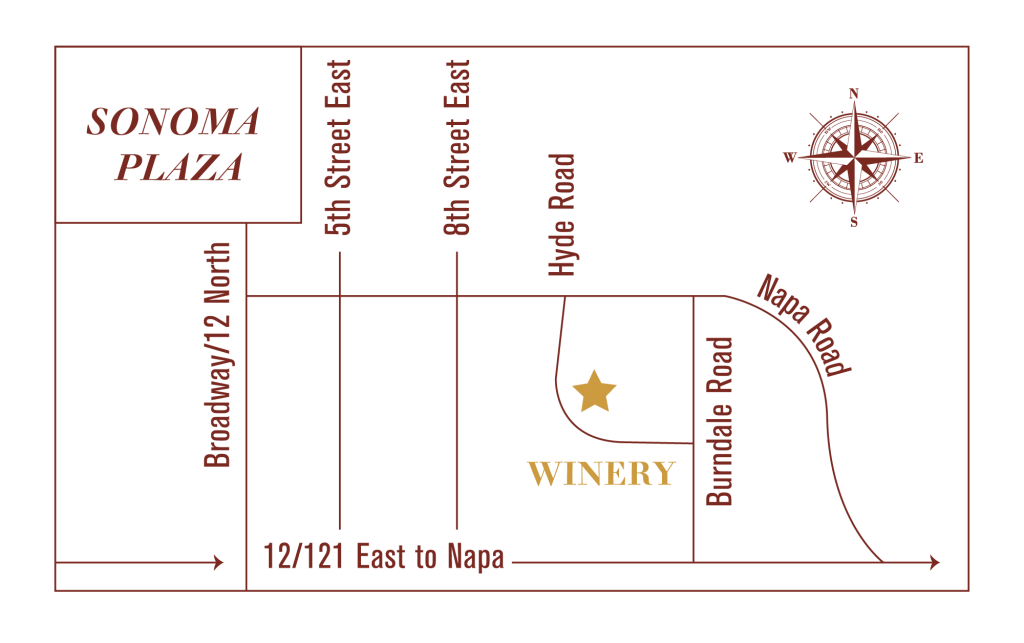
This week at Sonocaia. The summer flowers are hitting their peak. Please enjoy:
Final note – new chicks arriving in the hen house
Even in a protected setting like our hen house, apex predators manage to eat a chicken on occasion. So they must be replaced. A wonderful neighborhood kid is hatching her own chicks and selling them to neighbors. We picked up 10 new chicks last week and have them growing in their separate screened cattle trough – until they are big enough to introduce to the main population.
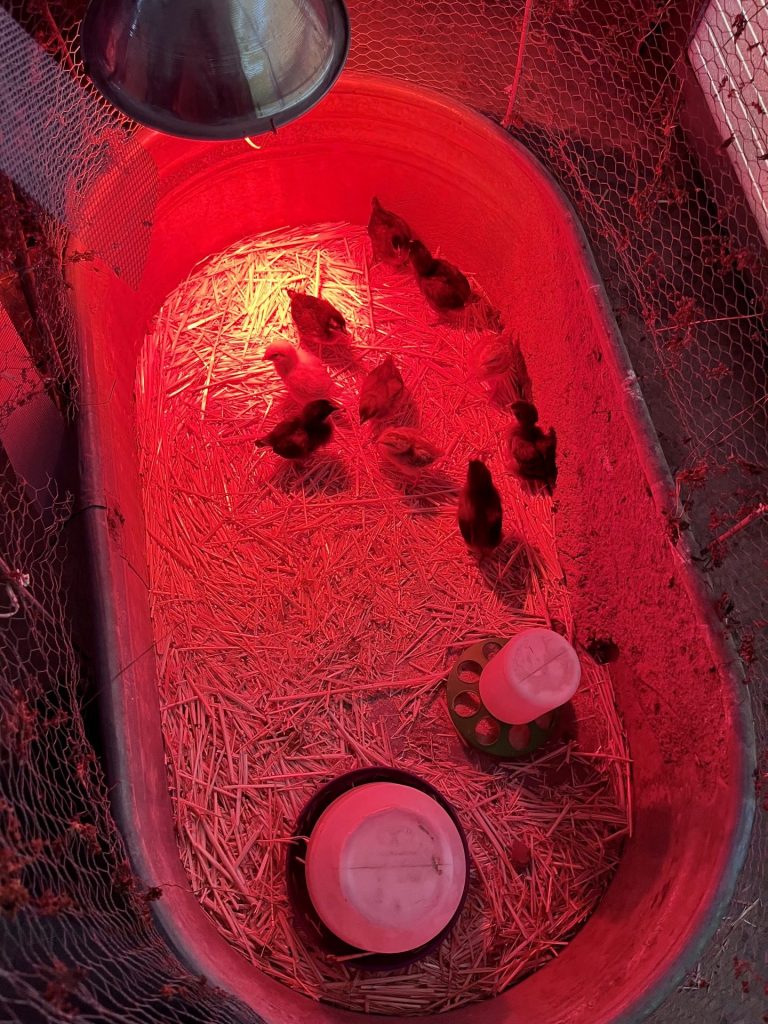
Ten baby chicks under the warmth of the heat lamp
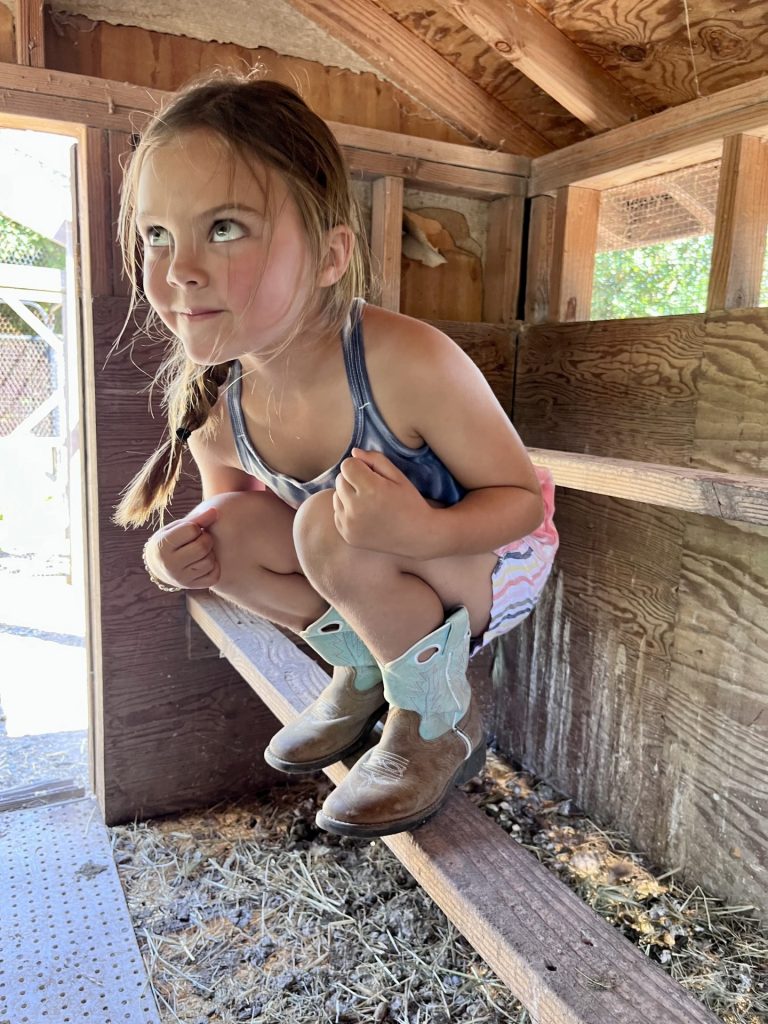
Our adorable neighborhood chicken whisperer
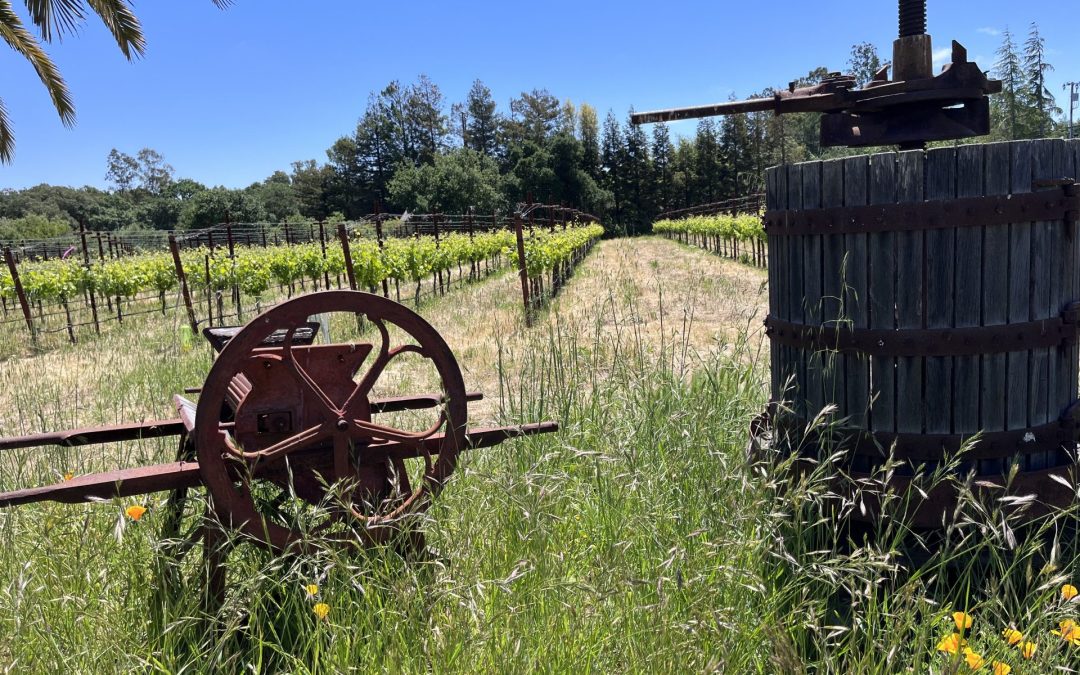
Jun 7, 2023 | Dysfunctional Family Winery, Hydeout Sonoma, Sagrantino, Sonoma, Sonoma Farming, Sonoma lifestyle, Sonoma Valley, Vineyard, Wine
Part 2 of farming and wine life in the Sonoma Valley…
Honey Bees and a National Park Ranger Talk on the Light Spectrum
Honey bees being a constant topic here at the Hydeout, what a great surprise to find a recent national park ranger talk on the color perception of bees! Turns out, honey bees see further out than humans on the light spectrum – which is why they can more easily find nectar in flowers. And why they don’t really like the color black.
Honey bees (cont’d)
Here are some more images of our work last week in the honey bees hives:
American Graffiti in Petaluma
This year marked the 50th year since George Lucas’ coming-of-age movie American Graffiti was released on the silver screen. Cruisin’ the Boulevard showcased hundreds of American model cars 1972 or older who joined in the annual parade of classic American cars cruising through the streets of downtown Petaluma where most of the movie was filmed in the summer of 1972. The best place to watch was along Petaluma Boulevard, south of B Street to D Street.
Fire
Sad to say we’ve had two fires already in our lovely Hyde-Burndale neighborhood. The first was a grass fire from some untimely afternoon high grass mowing. Our local neighbors with a water truck beat the firefighters to the scene (due to a faulty address) and had the fire out quickly.
The second, was a structure fire right across the street from us. The awesome and very local Schell-Vista Fire Dept arrived, followed closely by Cal-Fire, and that fire was also put out quickly. Hopefully the last of this fire business for the year.
Meal Fit for a King
Hosted by noted Napa vintner John Boich of Boich Cellars, we enjoyed an incredible food and wine event at their Wall Road vineyard (where we are farming Cabernet and Syrah for Boich). Check out the menu below for each of these incredible dishes:
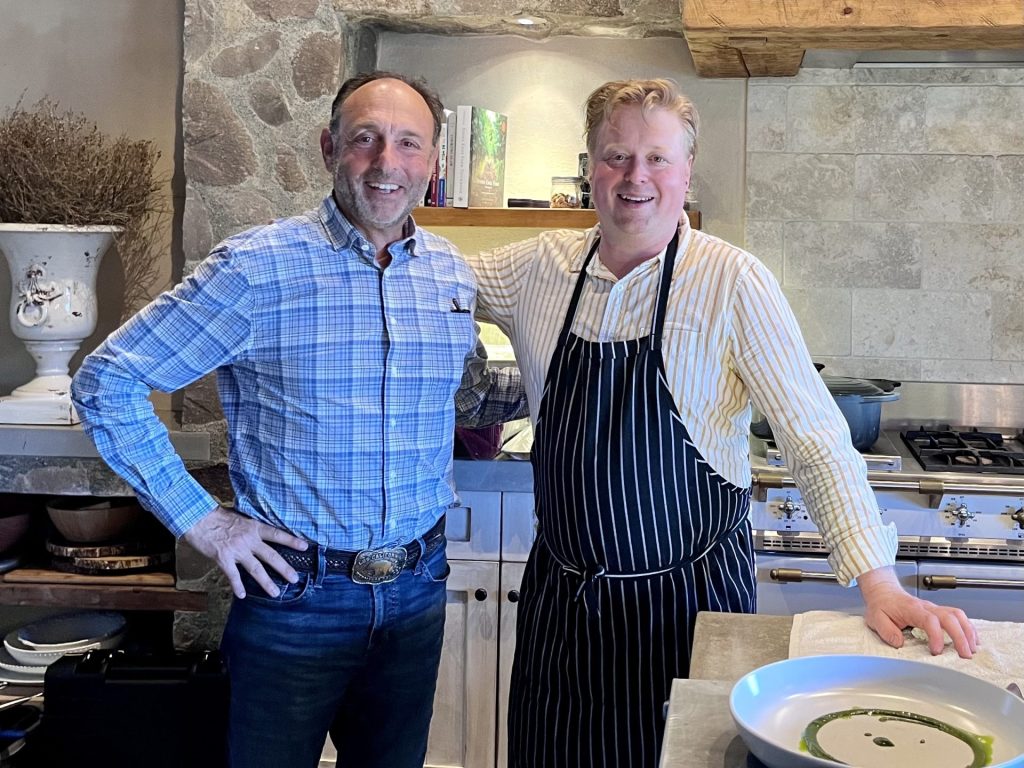
Yours truly, Ken Wornick, with chef extraordinaire Landon Schoenfeld of Oak and Acorn Luxury In-home Dining
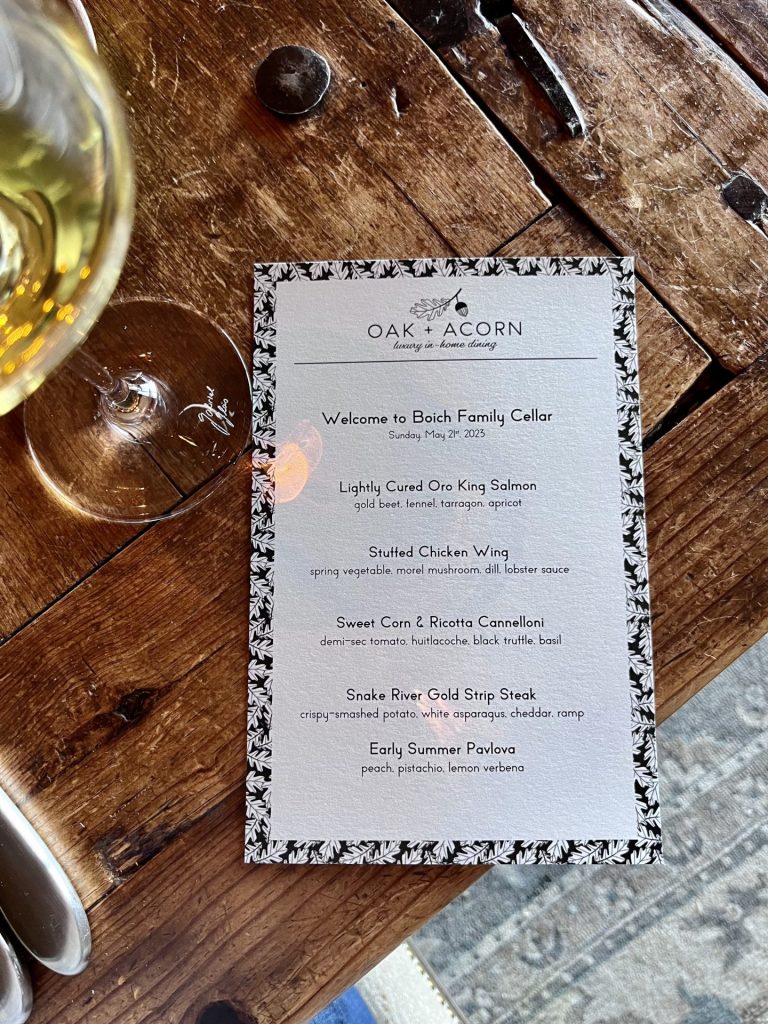
The Boich Cellars menu from Oak and Acorn Luxury In-Home Dining. Find them at 612-618-5909, oakandacorndining@gmail.com
Wildlife
After a very wet winter, wildlife activity is booming around Sonoma and at the Hydeout. These images, shot by professional photographer Michael Hodgson, Sony Pro photographer & travel journalist, at www.michaelhodgsonphoto.com and michael@hitraveltales.com
Snake!
This is first time ever finding a snake at the Hydeout. Snakes, especially rattle snakes are super common up in the hills around Sonoma. Down here in the almost-flats, we have very few to zero rattlers. This snake however is actually a common gopher snake that was leisurely crossing the driveway. I grabbed it, put it in a bucket, and took it straight out the vineyard where it very quickly disappeared down a gopher hole – to my very great delight!

Cork from Ganau, it’s Italian for cork
Our primary supplier of cork is Ganau, a local Sonoma company run by terrific people. In this video, you can see a natural product, cork, being naturally branded by fire. Click here to watch a 30-second video of cork being fire-branded at the Ganau plant

Fire branded and ink branded corks
Final thought…
Fun night at the Big Easy in Petaluma seeing Illegitimate AC/DC. Fronted by my buddies Bob Taylor (as Angus, center, guitar) and James Marshall Berry (right, on bass). They rocked hard all night long. Bob and James are also an integral part of KSVY Sonoma, our local radio station. I was a guest on Bob’s The Morning Show last week – check it out here: listen to Ken Wornick on the KSVY Morning Show
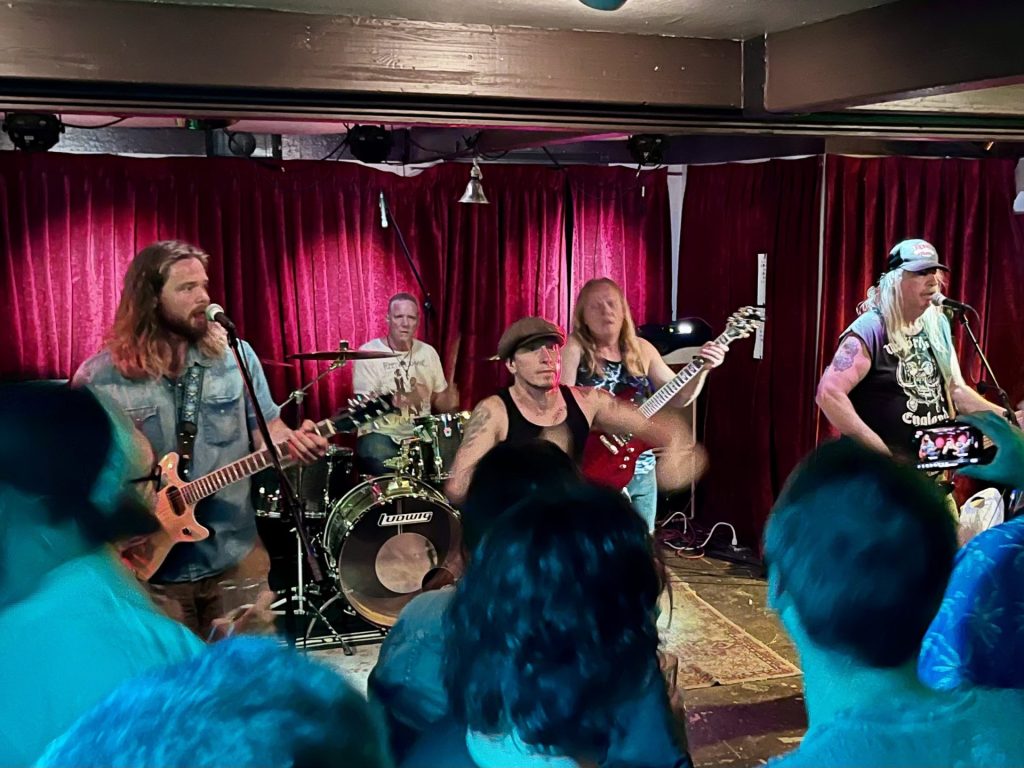
Next up – watch for a big announcement!
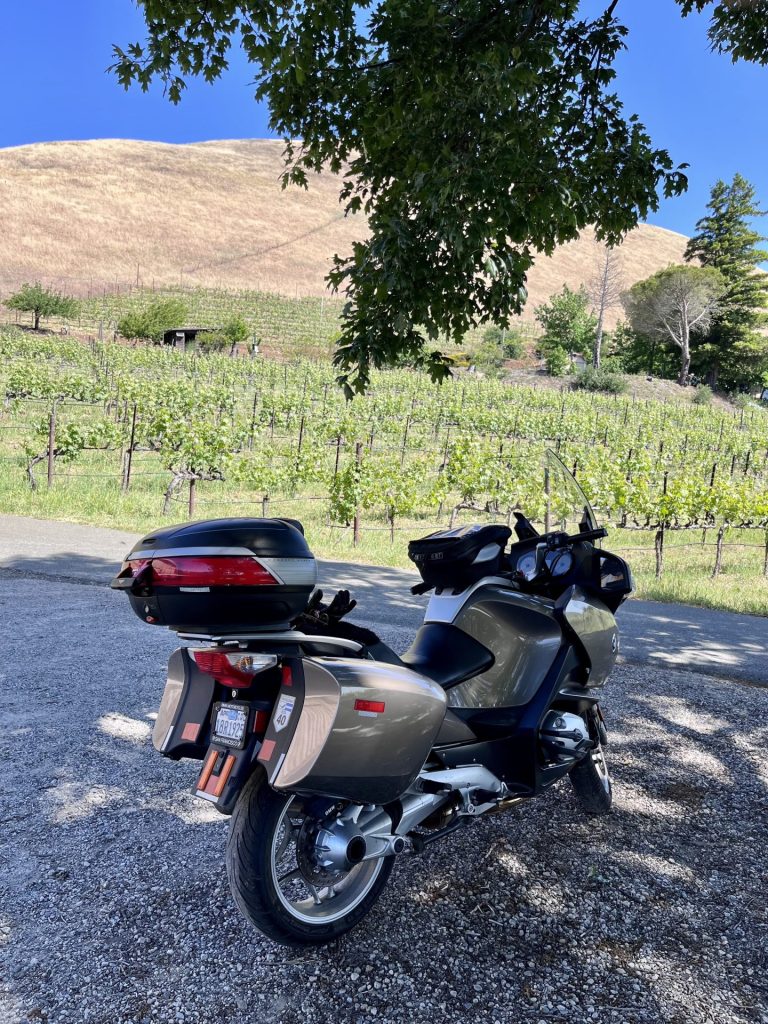
My trusty 2007 BMW R1200RT gets me around to all the vineyard sites we farm.
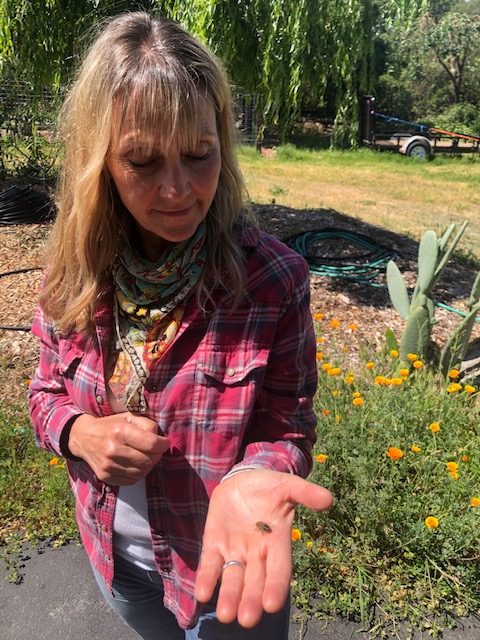
May 14, 2023 | Dysfunctional Family Winery, Hydeout Sonoma, Sonoma, Sonoma Farming, Sonoma lifestyle, Sonoma Valley, Vineyard, Wine
Olives, honey bees, chickens, bats, owls, farmer’s market, and wine…the list of farm projects at Hydeout Sonoma is growing every day. I think you’ll enjoy following along:
Olives and the dreaded fruit fly
The olive fruit fly is ubiquitous now in wine country. Perhaps due to the sheer number of olive trees, or the years of drought, and/or so many olive trees in residential yards that receive zero pest management. But there are several 100% organic and cost effective methods to control the olive fruit fly. See the photo captions:
-
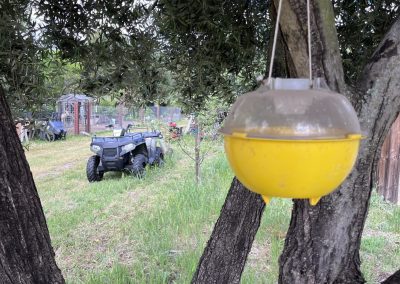
as seen here
Honey bee project
We currently have three honey bee hives here at the Hydeout – one hive from a captured wild swarm, one hive from Bee Kind bees in Sebastopol, and one hive from Mann Lake bees.
-
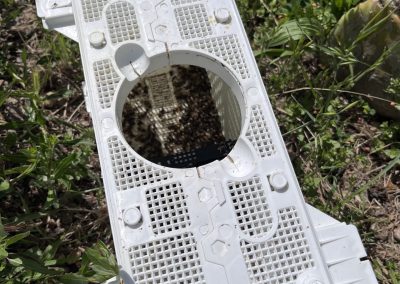
Shipped bees come in a container like this with thousands of bees inside...
-
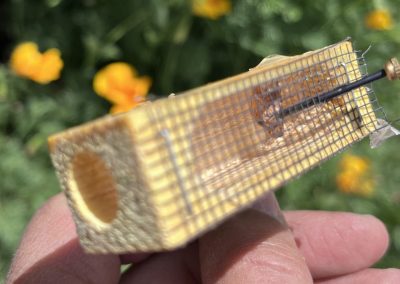
and the queen isolated in this screened holder
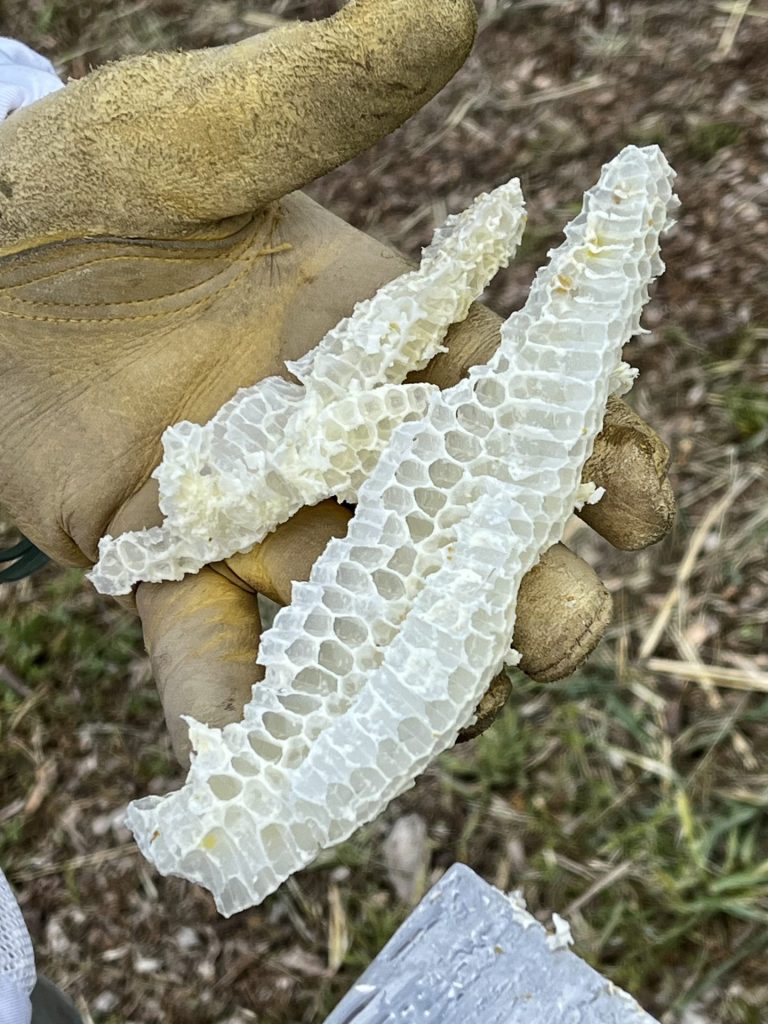
Here, some hive comb that the bees were building in the ‘wrong place’ in the hive. Had to remove it before they got to far. It is important to guide them to build comb only in the frames – where we can later expand or contract the hive as needed when food becomes short and cold weather sets in.
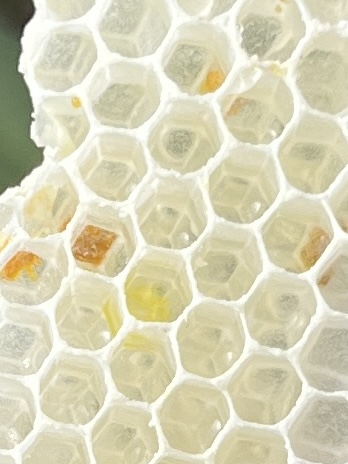
The miracle of perfect geometry in the world of honey bees.
Chickens
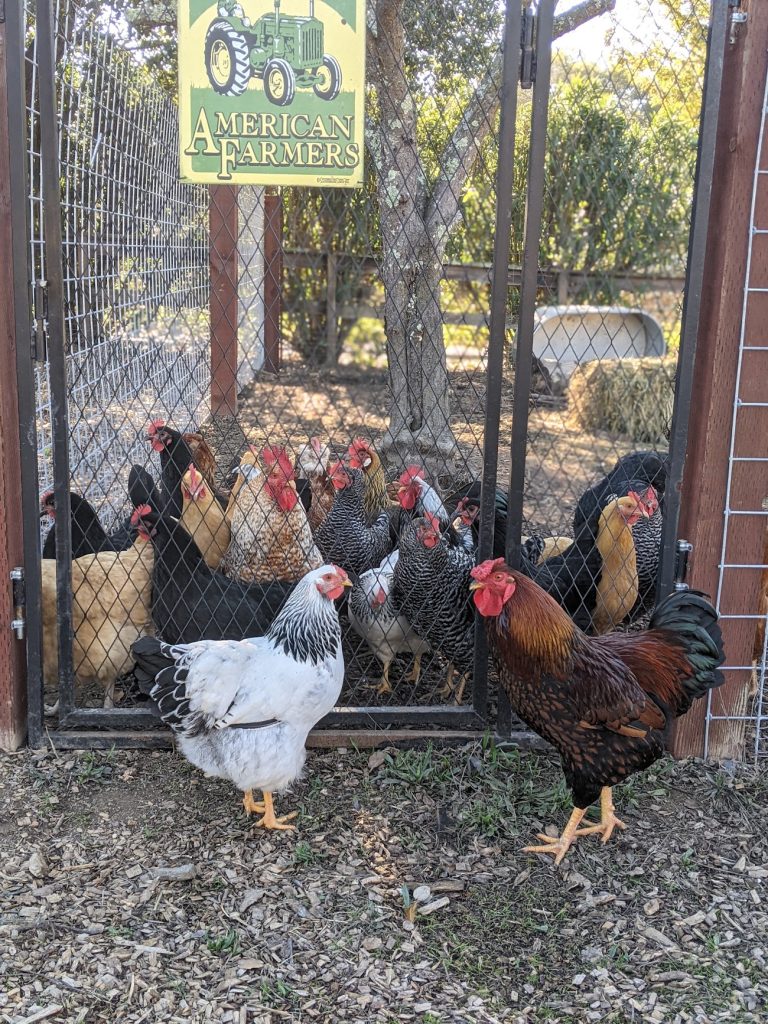
The Hydeout Sonoma chickens are shifting their energy to egg production as the summer sun warms their environment. Contact Cynthia if you’re interested in eggs.
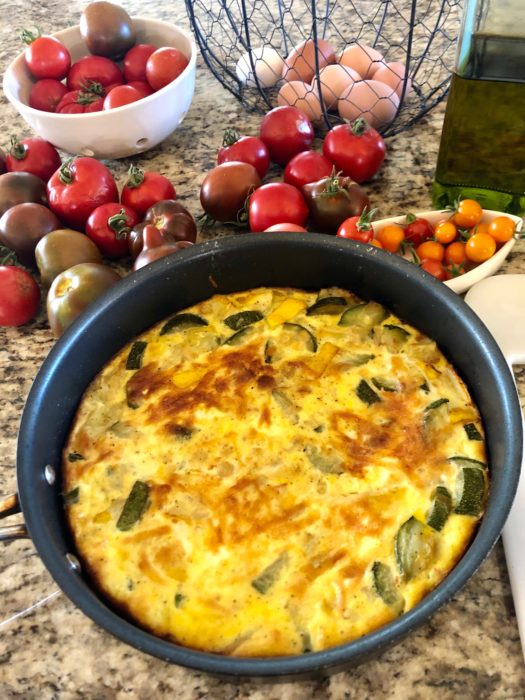
…and this fresh egg frittata is the result!
Tuesday Farmer’s Market on Sonoma Plaza
Neighbor and friend Lori Murray of Lola Sonoma Farms is an expert in pasture-raised 100% organic heritage “Kune Kune” pork resulting in very clean healthy meat. And a great sense of humor too.
Bats
Bats are one of the most important and totally misunderstood animals. We are crazy for bats and are encouraging their place here at the Hydeout. Bats are a critical interstitial species (see this link: more about bats). And are a crucial and fully organic living tool in wine country integrated pest management. Bats can eat 1,000 or more mosquitos and insects per night! It is so great that we finally had a very wet winter. But pools of standing of water have created a haven for insects of all kinds. And bats help keep things under control.
-
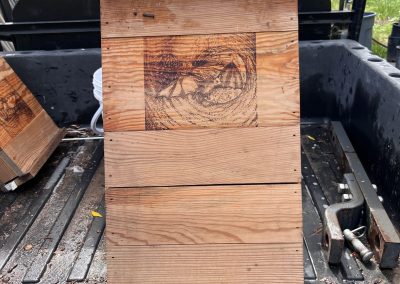
Narrow and tall, this bat box house is carefully designed...

Placing the bat boxes in just the right location will assure it’s success.
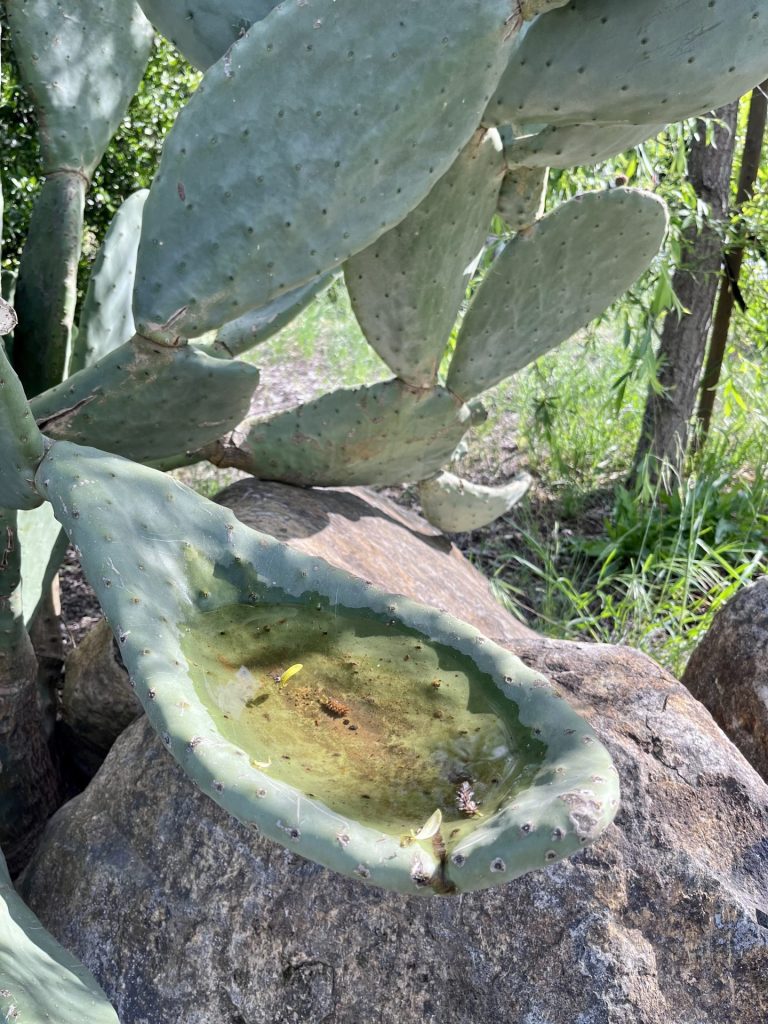
This paddle cactus is providing an incredible place for birds to find water, but is also growing mosquito larvae.
Grape Vines
Weather, gophers, rabbits, water – the pressure on vineyards and grapevines is painfully constant. Even in a small vineyard of just a few acres, it is not unusual to lose 30 or 40 vines per year. Like everything else in farming, it is important to constantly replace the losses with new vines, so that the vineyard is always maintained at peek performance.
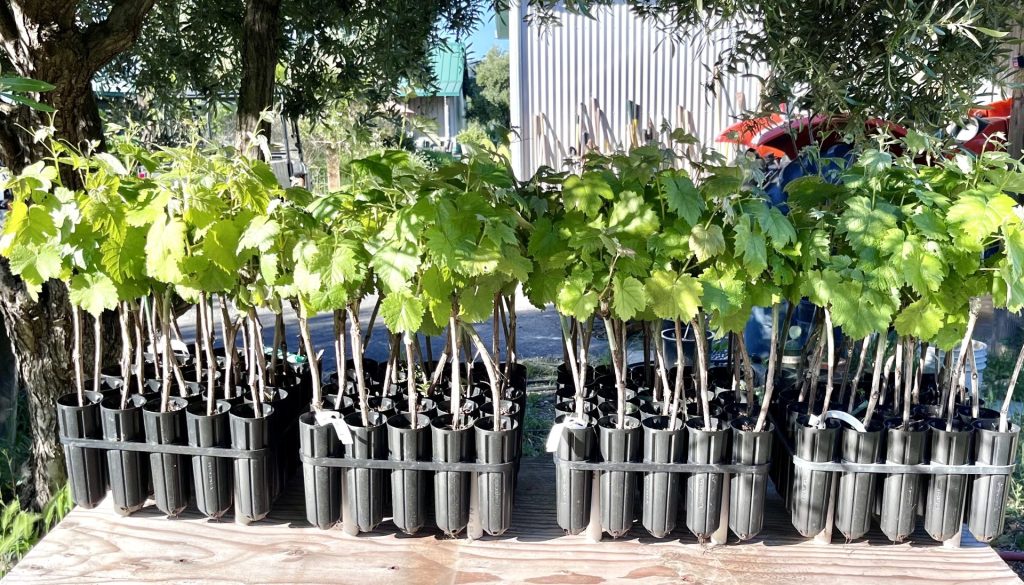
New grapevines from the nursery which have been fully acclimated and are ready to be planted.
Sonocaia – our new winery here at Hydeout Sonoma
Many of you are aware of our multi-year project to launch our “estate reserve” Sagrantino wine. The new name associated with our Sagrantino based wine is “Sonocaia” (pronounced So-No-Kaī-Yah).
Coming this spring with the first invitations going to our blog post readers like you – the grand release of our first Sonocaia (So-No-Kī-Yah) Estate Reserve Sagrantino. Never heard of the Sagrantino grape? It produces a deep dark delicious red wine, originally from Monte Falco, Umbria…and now from the Sonoma Valley c/o Hydeout Sonoma. More on this soon with a new winery, label, website, and more.
See this chart for some astounding information on this little-known grape variety:

Wine tasting with clients
Faith Armstrong and I routinely meet with our Forward Vines and Wines clients – to taste wine from barrels and bottle samples. We taste not only the wine we’ve made for our clients, but often many other local wines – as a guide to client preferences, i.e. color, acidity, tannin, alcohol, blending, etc. Here we are in the Sonoma Mountain AVA tasting several local Chardonnays.
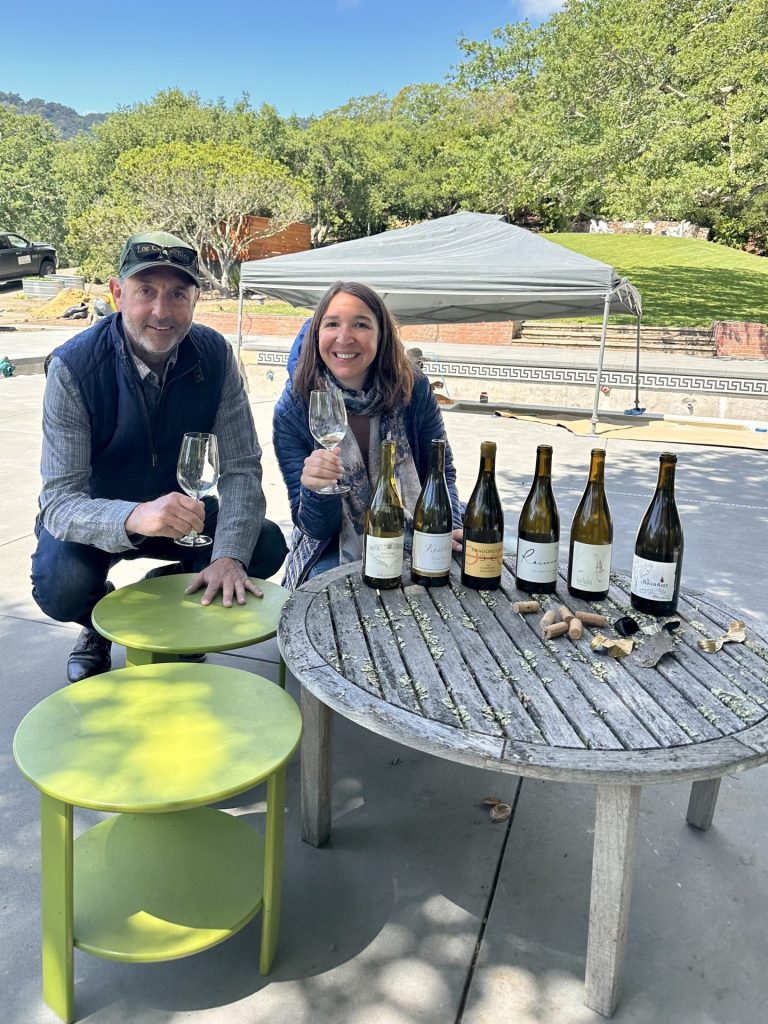
Mowing the fence line
What could be better than a Sunday afternoon on the tractor mowing the fence line? For a walking path, a dog run, and especially access and fire prevention, mowing the fence line should be done early and often.
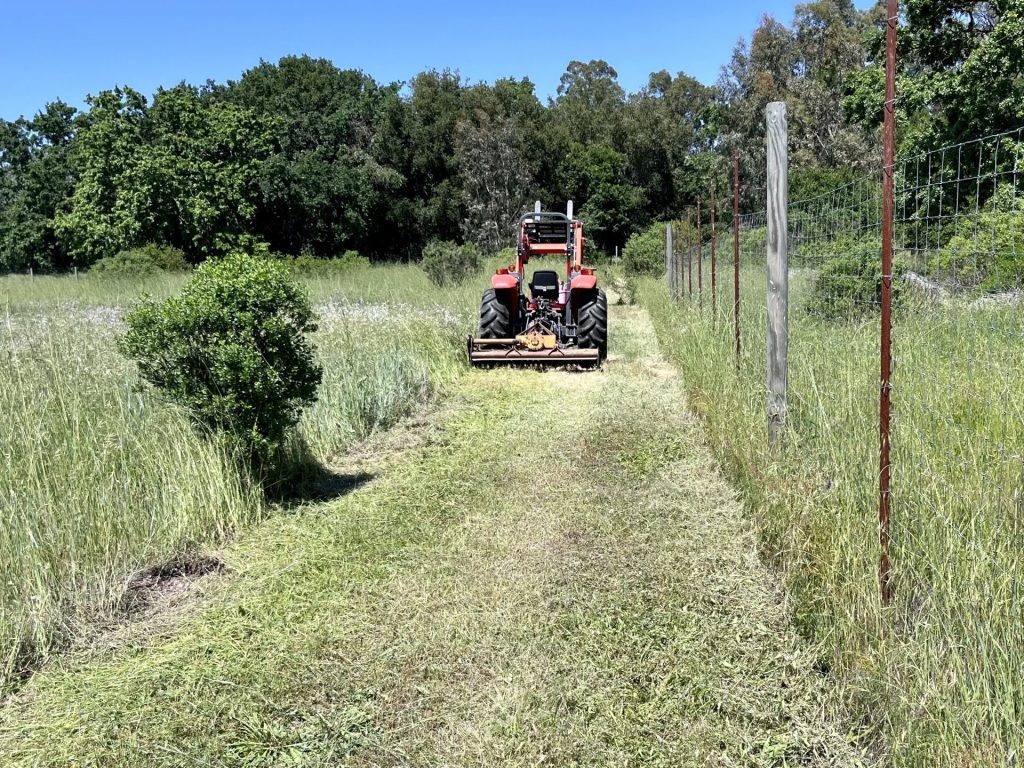
Moonrise at the Hydeout
A rising full moon at the Hydeout, or anywhere in Sonoma Valley, the “Valley of the Moon,” is a wonderful and heartwarming event.
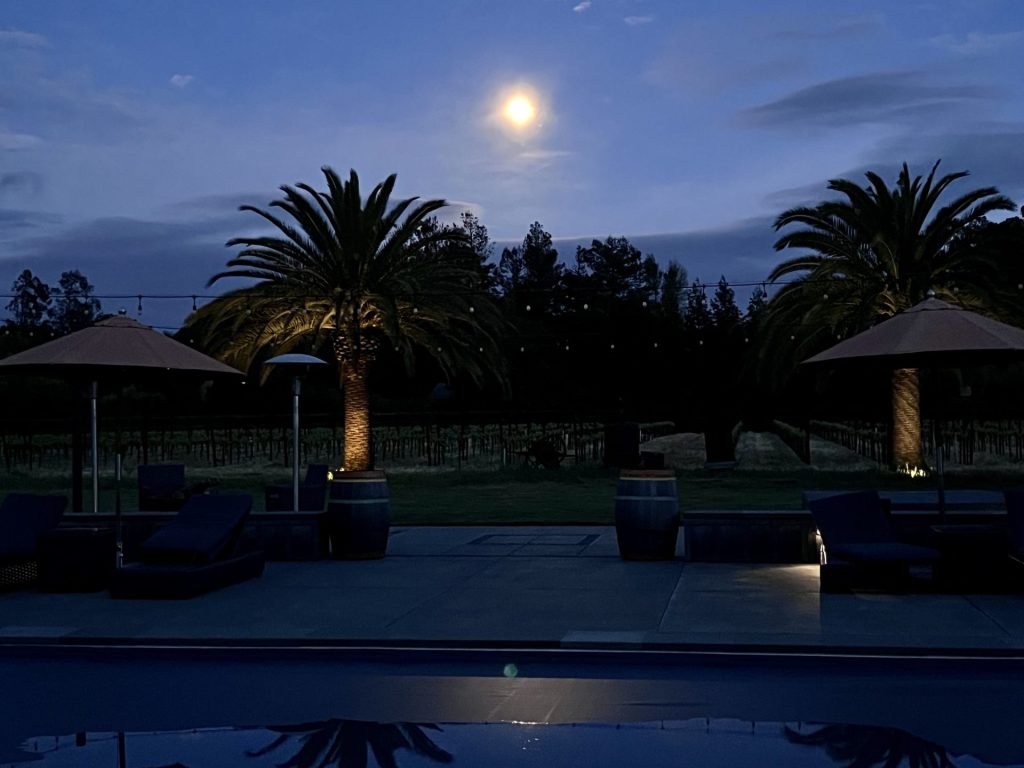
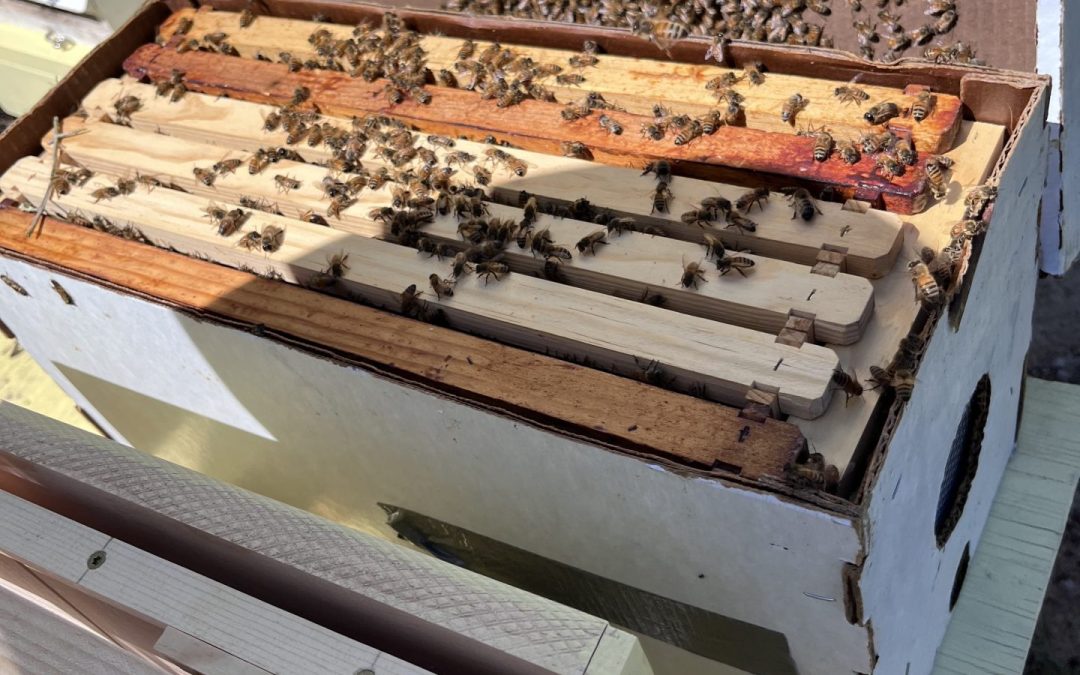
Apr 13, 2023 | Dysfunctional Family Winery, Sagrantino, Sonoma, Sonoma Farming
Blind tasting modern Spanish Priorat
Another fascinating tasting with preeminent host Don Sebastiani at the Swiss Hotel on Sonoma Plaza.
Priorat is in Catalona (Catalunya), a region immediately south west of Barcelona, and directly west of Tarragona. It is rough and rugged in the extreme. For most of its wine history, it was a scenic but otherwise nondescript place with dull brownish wines. Then, big Spanish wine money started pouring into Priorat in the 1990’s. And now the wines are uniformly modern and new world with swanky stylish labels. Most are made with blends of Garnacha (Grenache) and Cariñena (Carignane). This tasting was a real shocker to all of us as the wines were quite fresh and vibrant, with some evident terroir, and somewhat reasonably priced as well. And all available now at the Bottle Barn in Santa Rose.
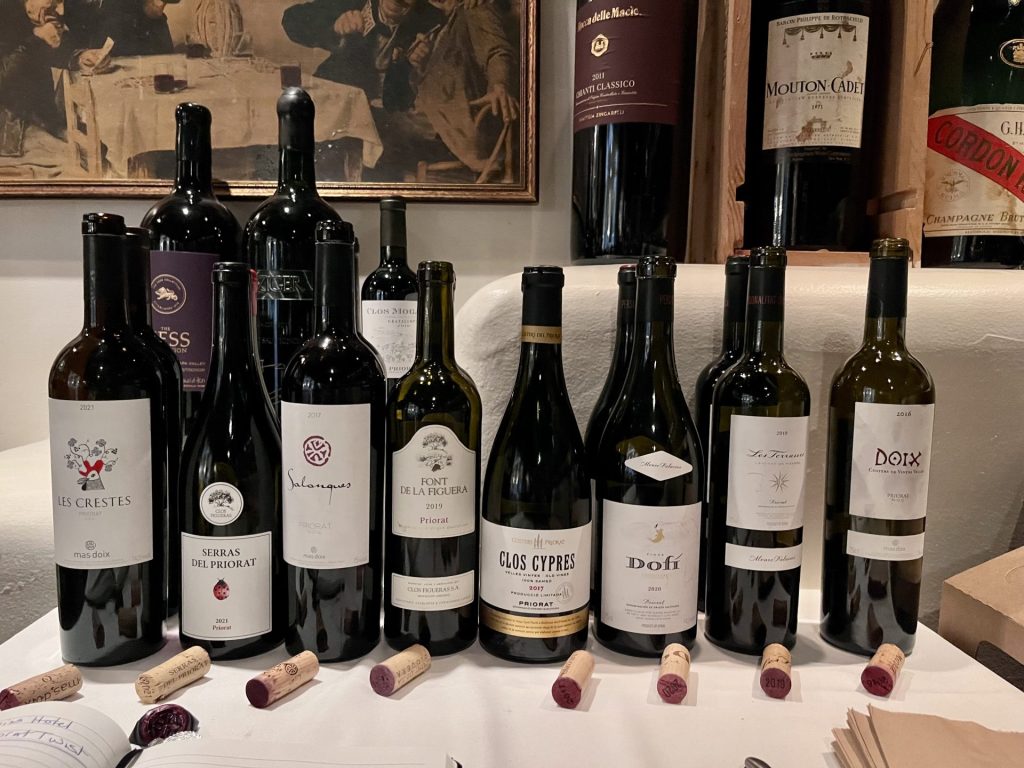
We started the tasting blind; this is an image after the tasting of the 8-bottle lineup, as it turned out organized by age of vines and vintage.
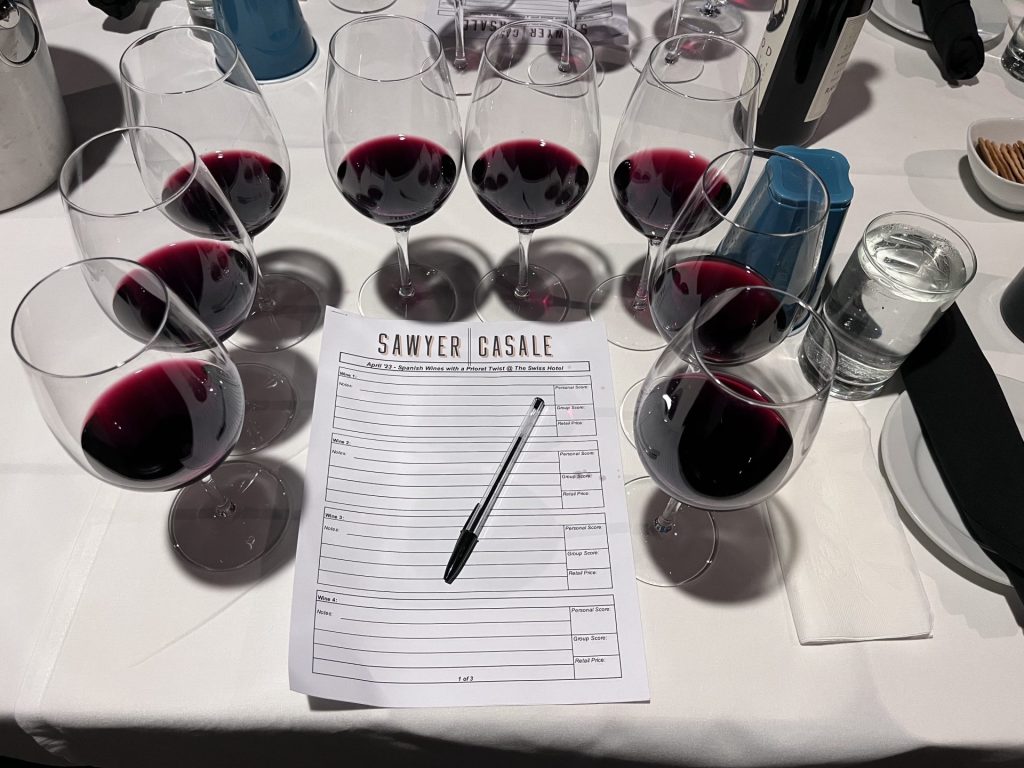
You can see these wine are all deeply colored, on the core and rim as well. No flaws, no VA, all clean and fresh.
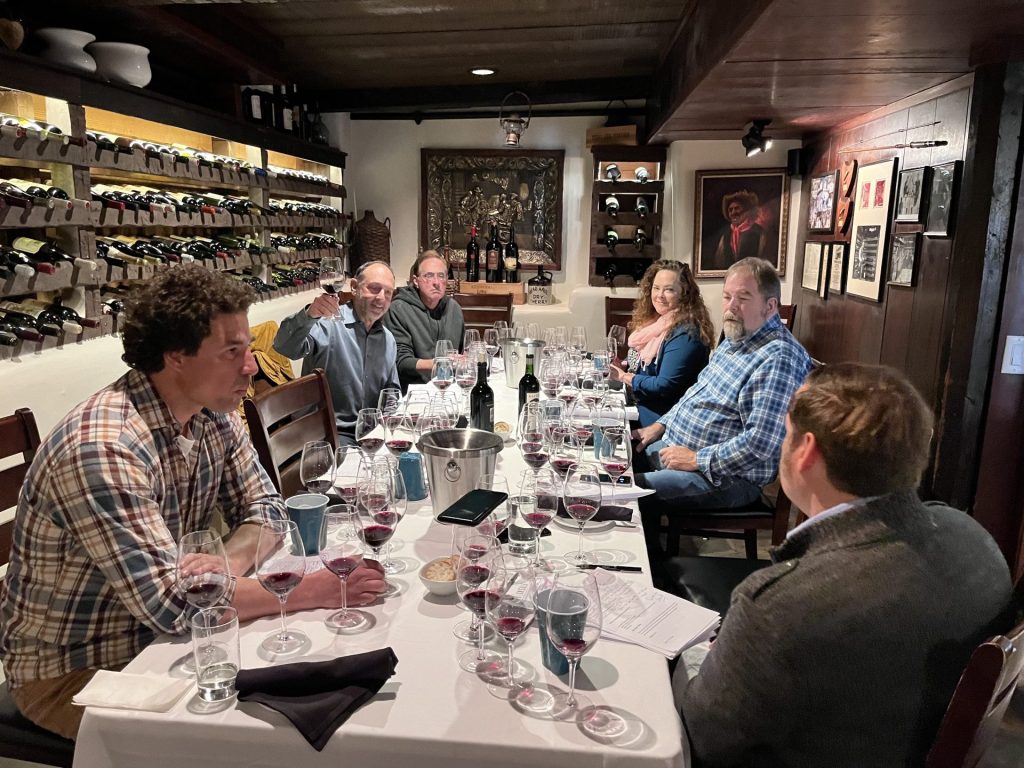
Part of the team of winemakers and media chatting about how to approach this tasting.
Installing a wild swarm of bees into a new hive box at the Hydeout
Good friend and beekeeper Nic Freedman from Bees Rock Ranch in Petaluma passed this wild swarm on to us for one of our new hive boxes.
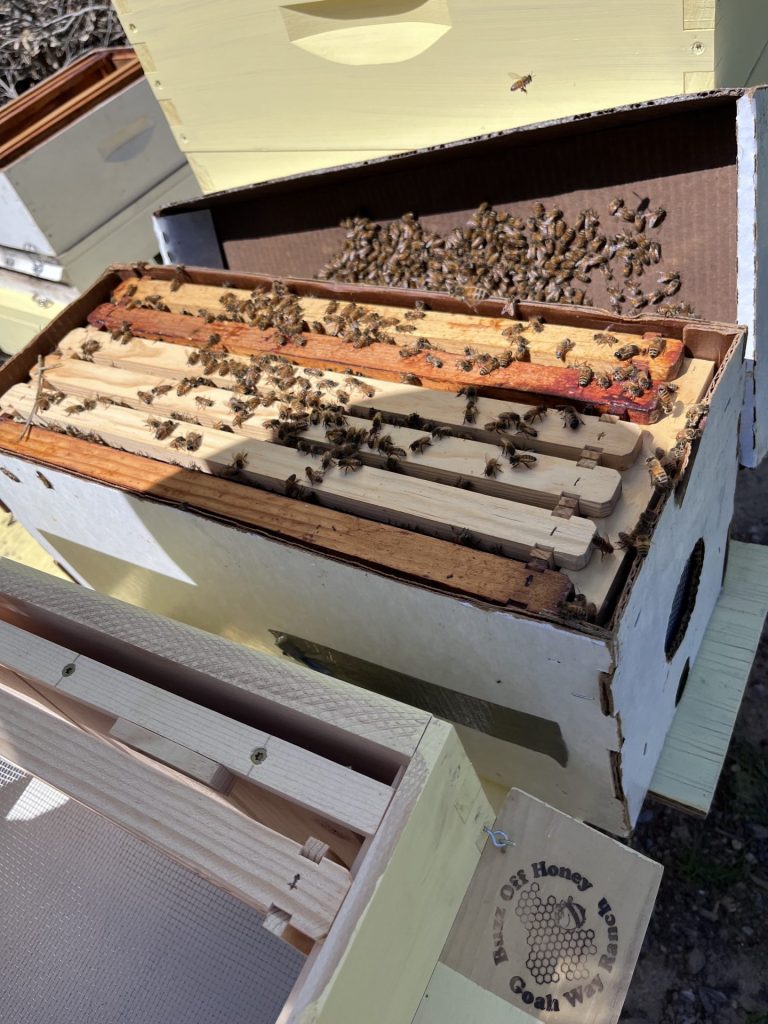
This swarm was caught in a swarm trap using lemon grass oil as bait. These bees may have been wild. Or, they could have been a hive splitting from one of Nic’s overwintering hives (which itself started as a swarm last year).
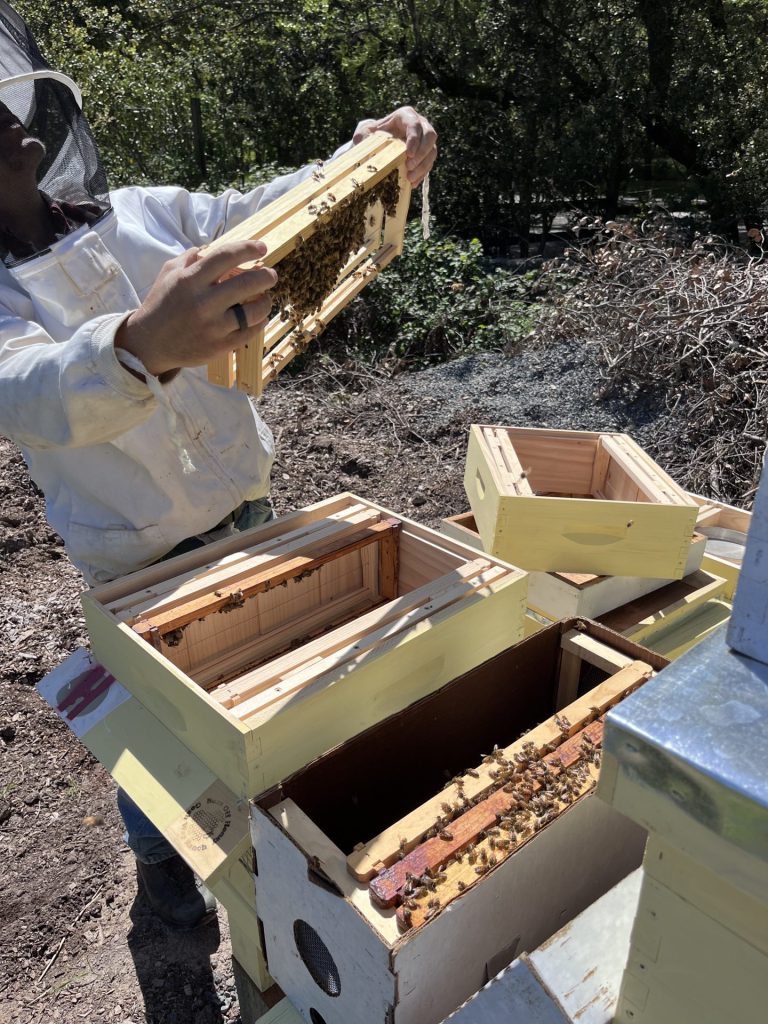
How do you transfer bees? Just carefully lift each “frame’ from the swarm box and place it in the new hive box. There are some rules about how fast to move, alignment of boxes, location of the hive, and so forth. Like most things, easy on the surface but complicated when confronting the number of decisions and various opinions on just about everything from various beekeepers.
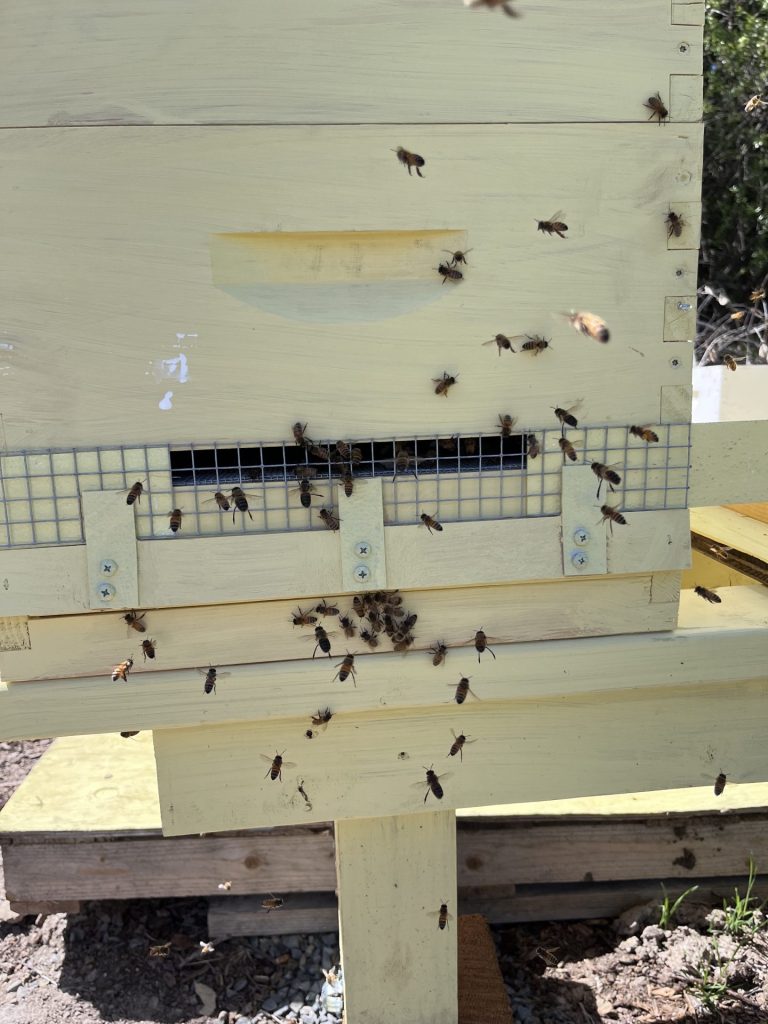
About 15 minutes after transfer into the new hive box; the bees are flying out, around, and back into the new hive to figure out where they are, developing navigation cues, and so forth.
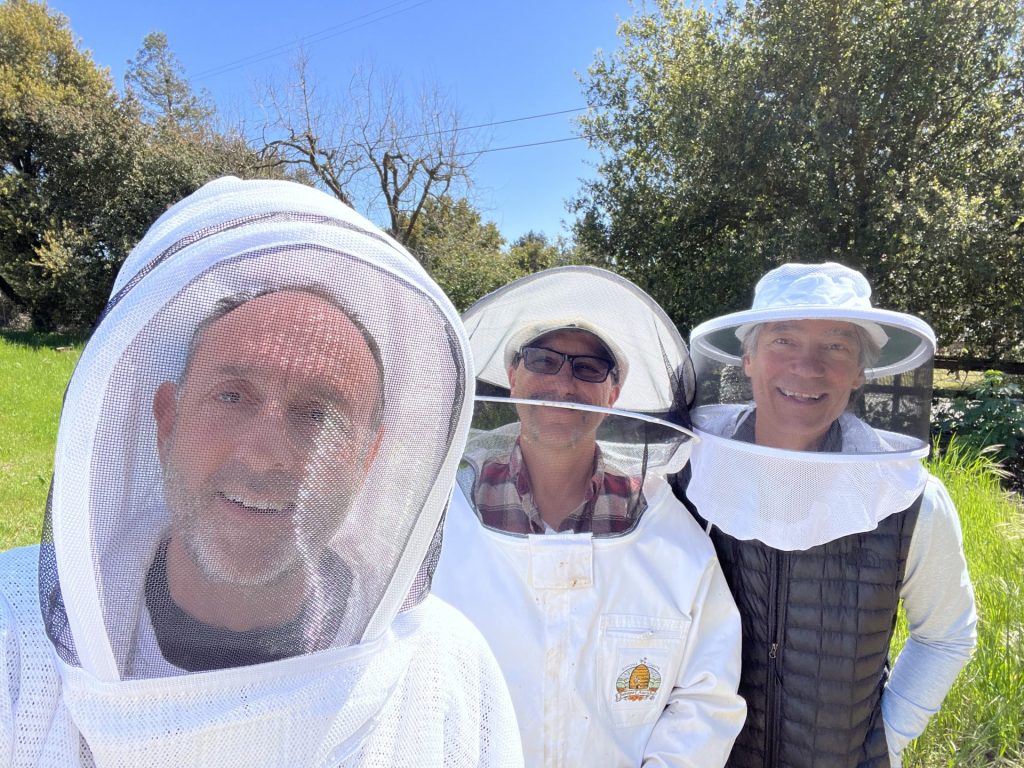
Myself, Nic, and friend and neighbor John Boich, all in our suits and observing the newly installed swarm at the Hydeout.
Motorcycling through Morocco
Just before bud break in our Sonocaia Sagrantino vineyard at the Hydeout, we had a chance to ride our BMW R1200RT through Morocco. We started in Malaga Spain, took the ferry south across the strait Gibralter, and then road through Chefchouan, Fez, the Atlas Mountains, the Sahara Desert, Dades, Marrakech, and Rabat. Lots to report about the geography, food, music, religion, politics, and so forth.
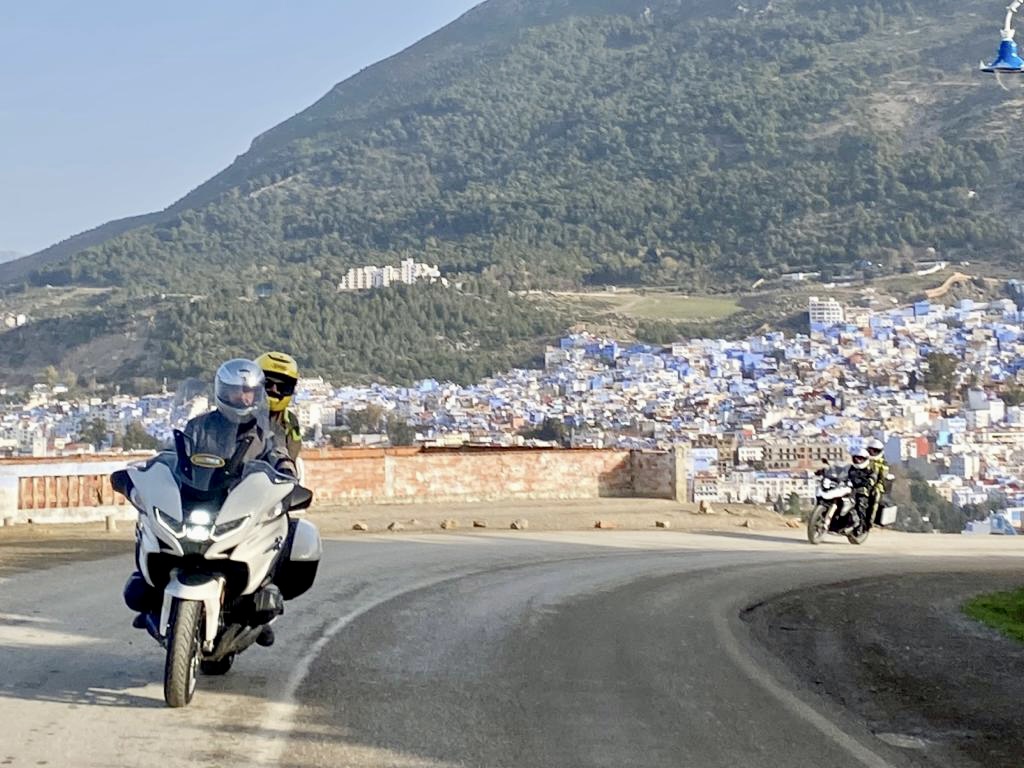
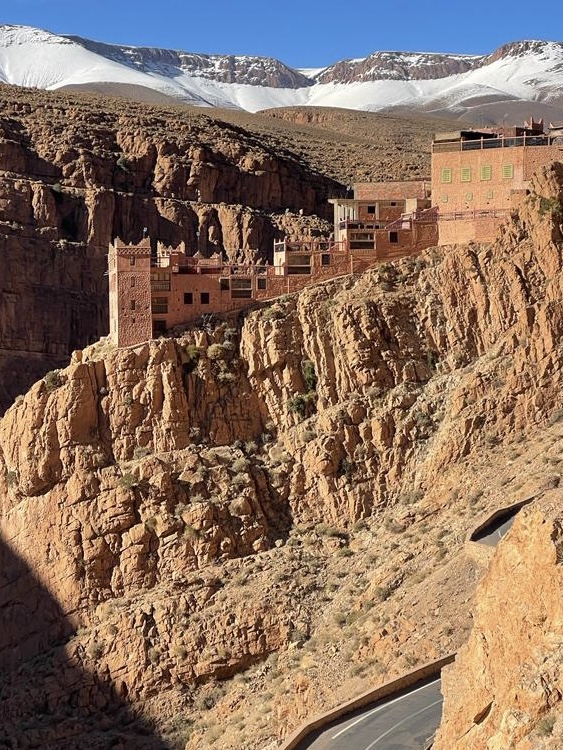
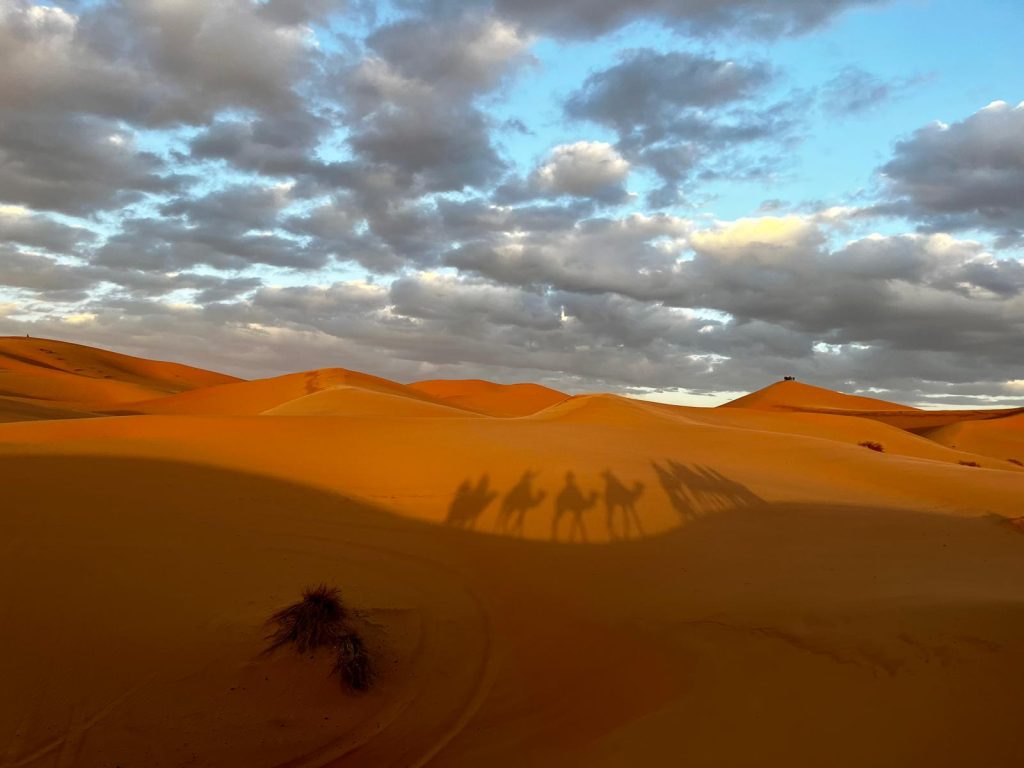
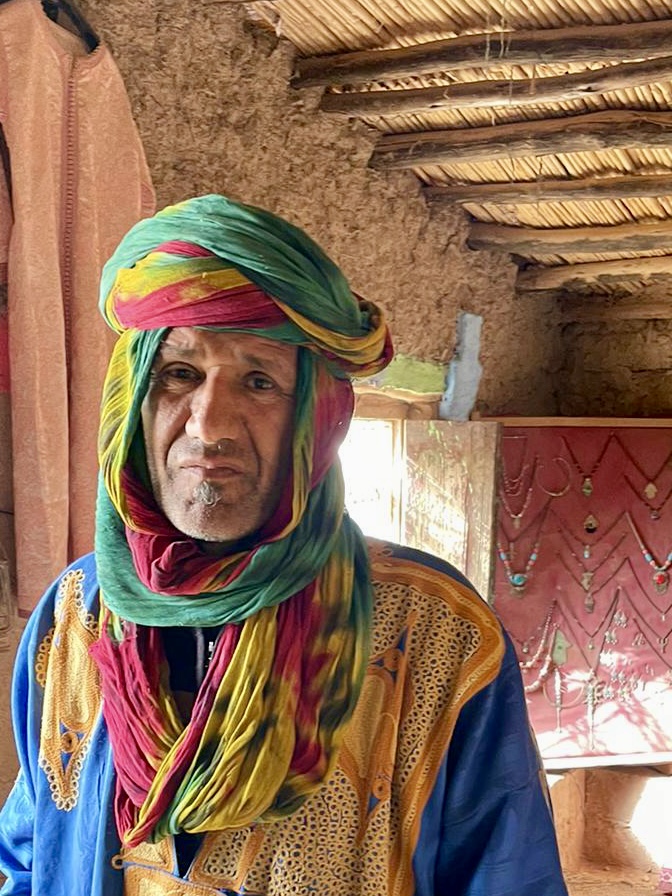
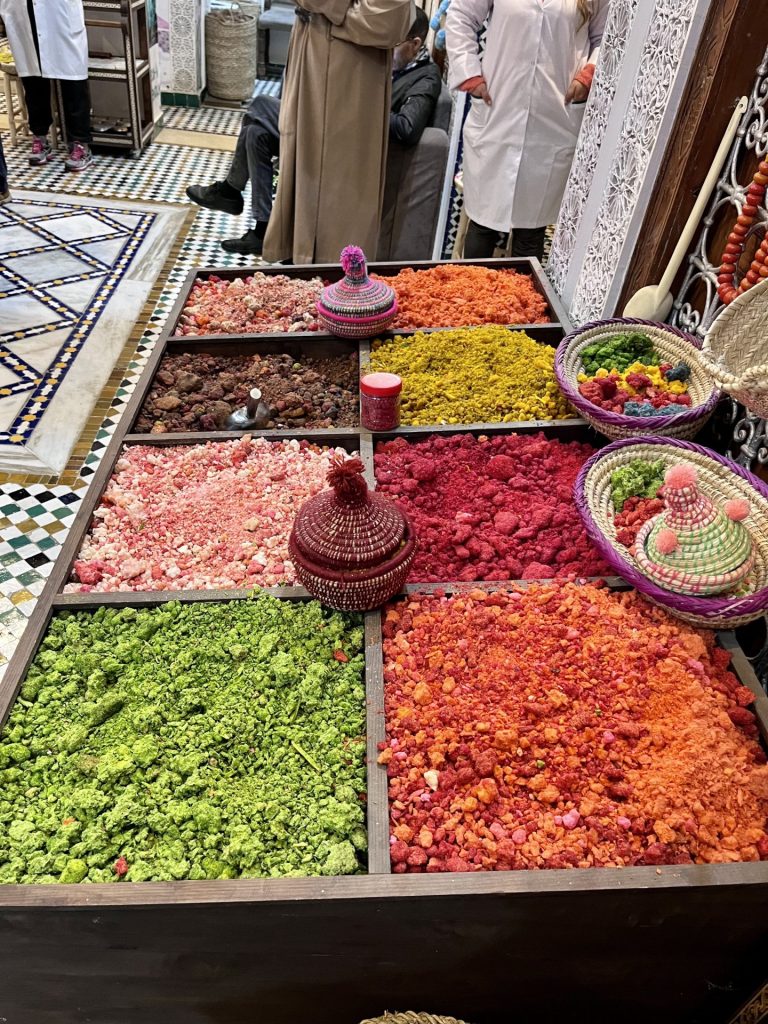
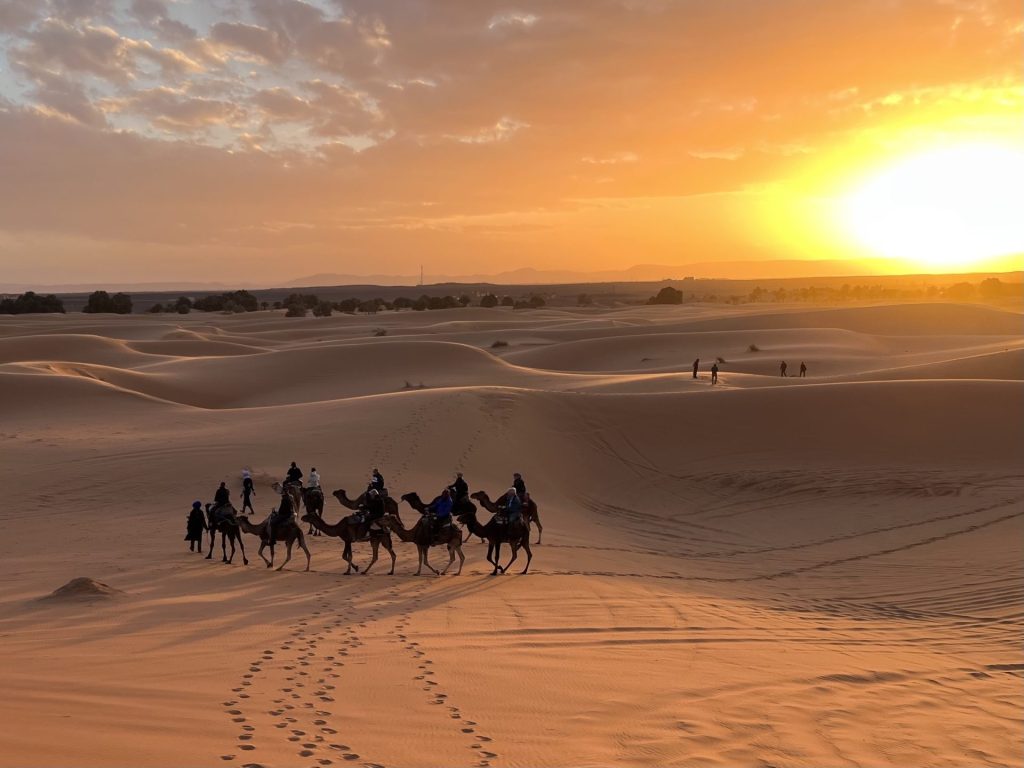
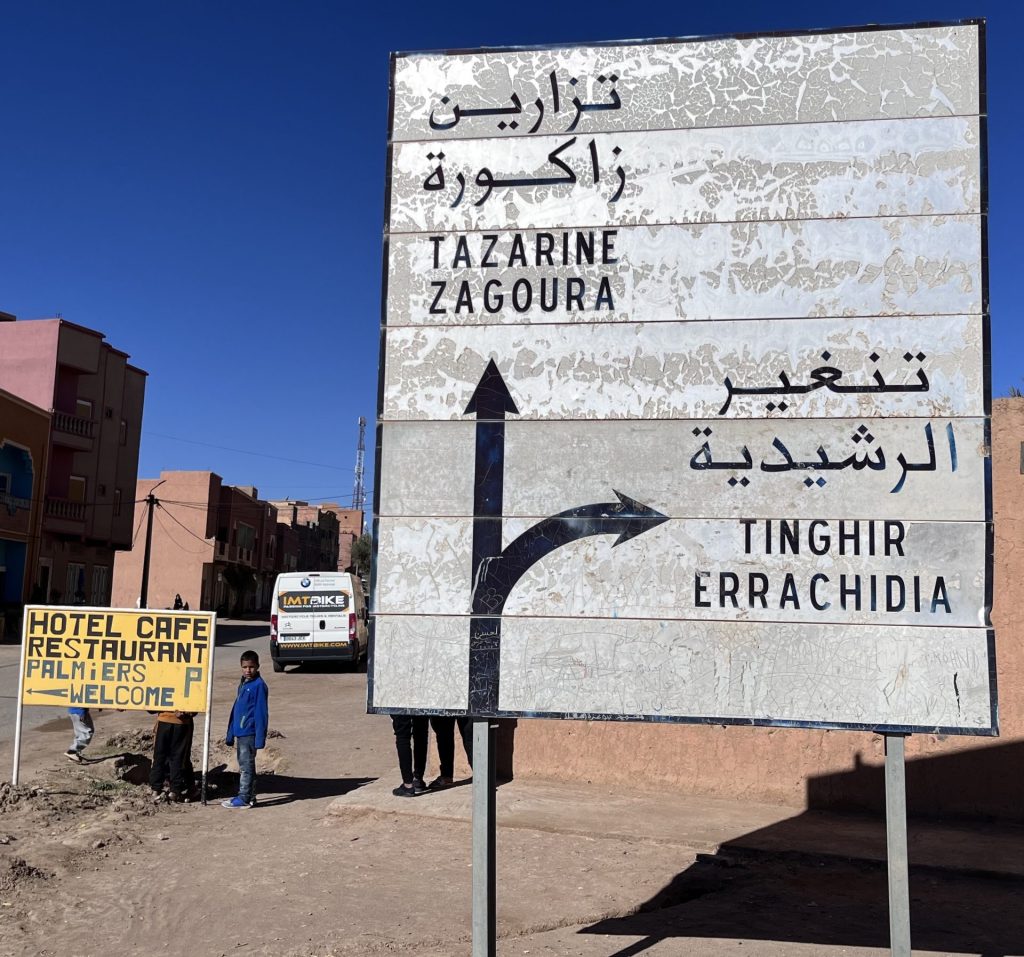
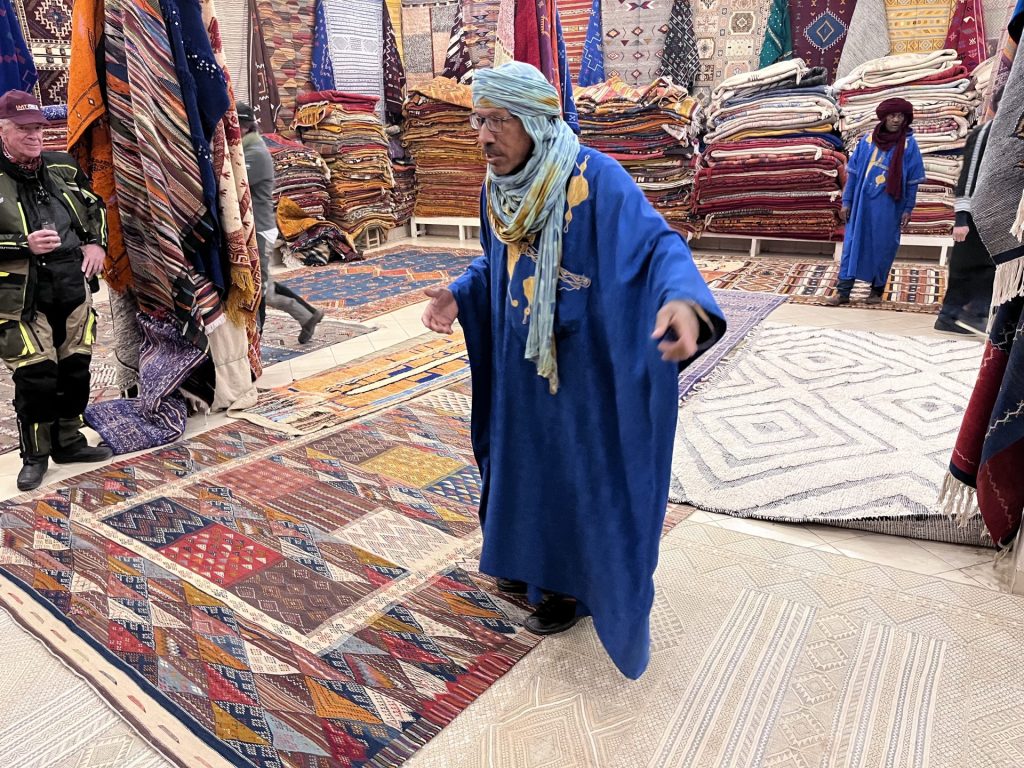

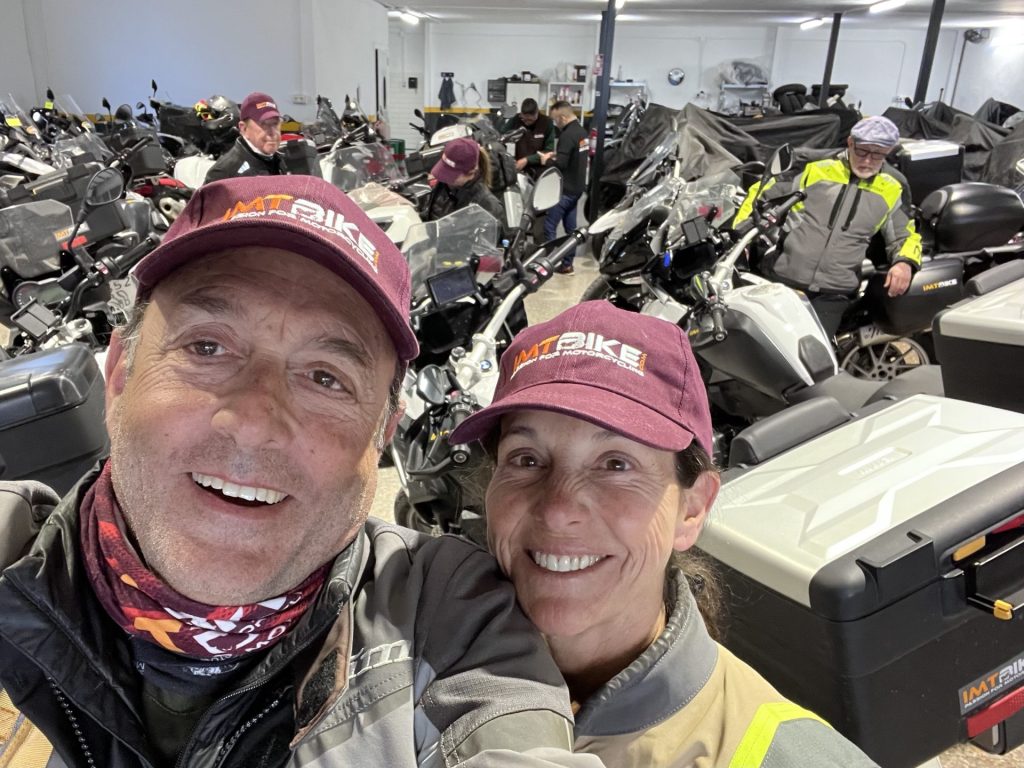
Older posts you shouldn’t miss:
Sagrantino tasting – our Sonocaia vs Italy
Italian Barolos blind tasting report
50-year old California Cabernet blind tasting
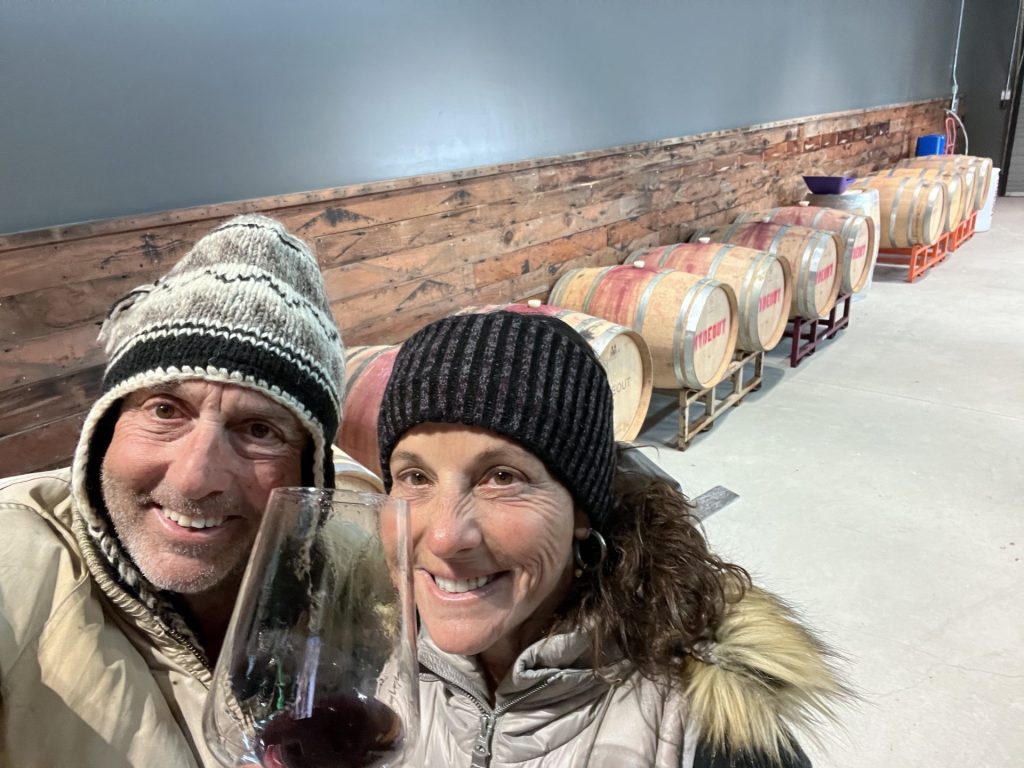
Back in the Sonocaia winery after a long journey home from Morocco.
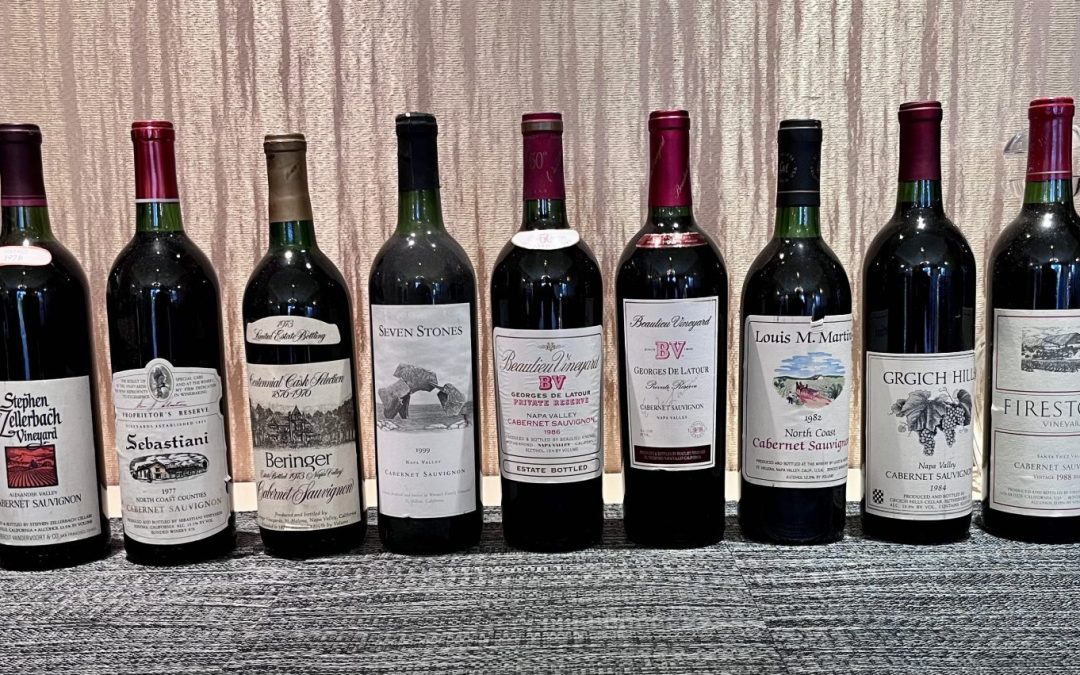
Jan 19, 2023 | California Cabernet, Sagrantino, Sebastiani, Sonoma lifestyle, Sonoma wine tasting panel, Uncategorized
The experts shock me with a surprising achievement in a crowded field of arguably the greatest of the older California Cabernets. Read the compelling story and see the results of our blind tasting:
25 – 50 year old California Cabernets (1973-1999)
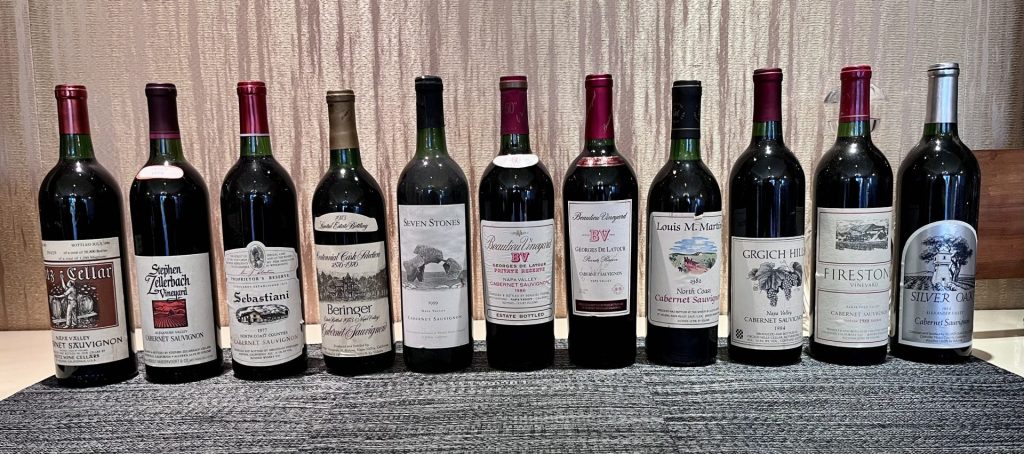
Spoiler alert! Here is the end of the movie first. This photo is from the big reveal – after the tasting.
These 11 wines were carefully opened, decanted, bagged, numbered, and poured. These wines are mostly from my personal cellar from when I first became interested wine starting in my freshman year in college and up to my very first garage-made wine twelve years later.
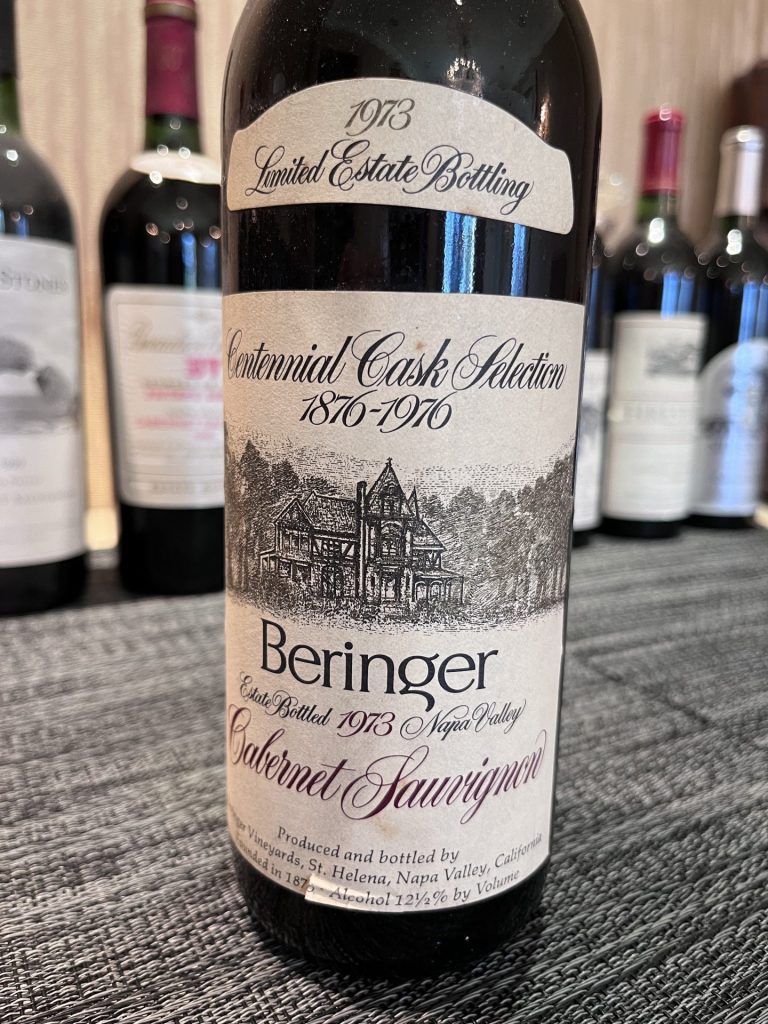
Beringer, Cabernet, Napa Valley, Estate, ‘Centennial Cask Selection’, 1973
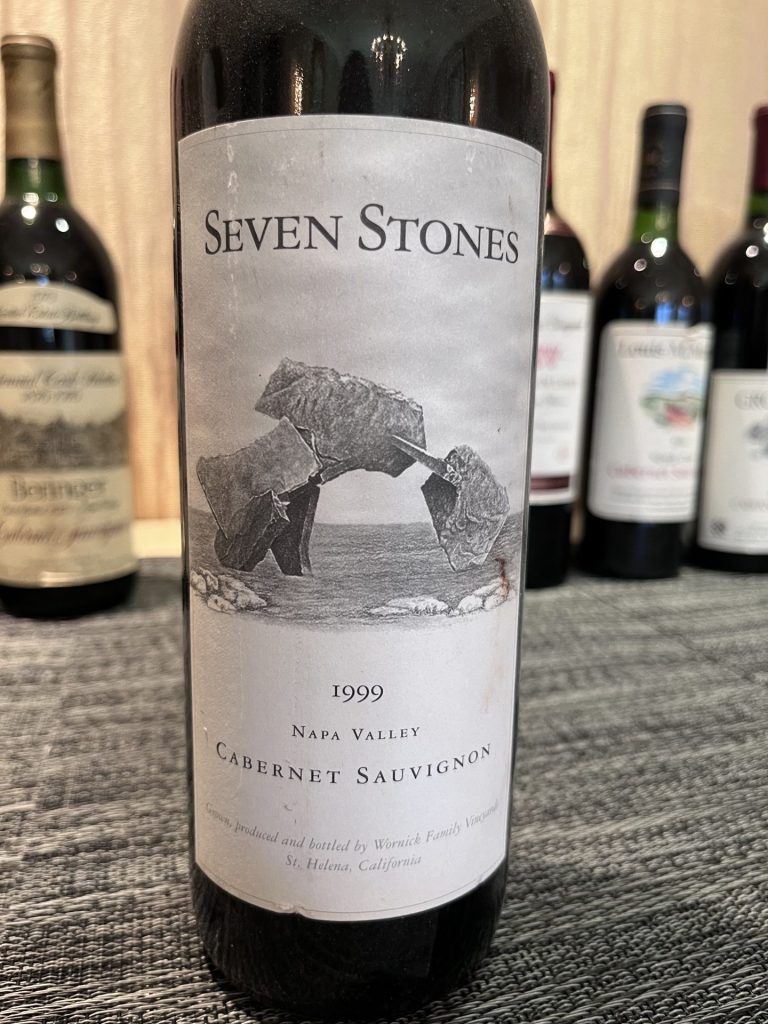
Seven Stones, Cabernet, Estate, Napa Valley, 1999 (the very first vintage, produced by me in the estate’s garage)
The results
Each taster scored their top 3 and bottom 1 wine (shown here).
The top half of this page is the individual scoring, the bottom half are the actual bottle codes. After the tasting and scoring, the list of wines was provided to the panel.
As a second thought experiment, before revealing the actual bottles, tasters attempted to match the 11 wines tasted to the printed list of 13 possible wines shown. The 2 French wines (from my father’s cellar) were not included in the tasting and were simply on the printed list as decoys – to see if anyone would take the bait. A few did.
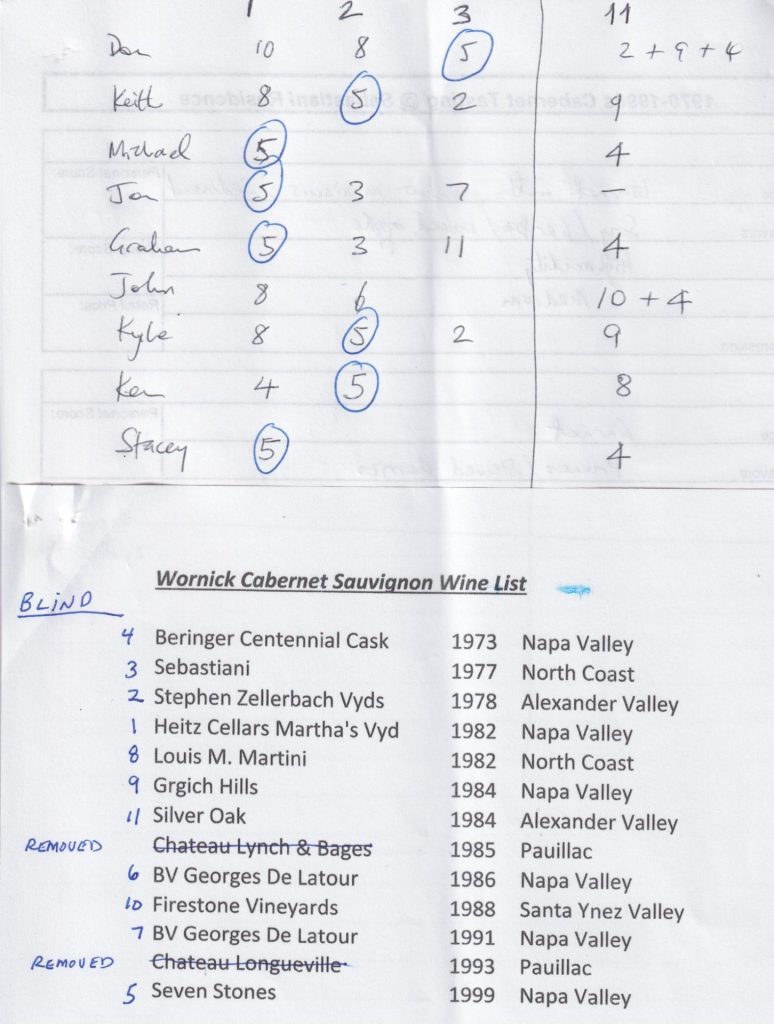
I could not believe my eyes! The clear winner? The 1999 Seven Stones! What? One of the first wines I ever produced. Not commercially either. Just made as a garage wine for our family.
Was this for real? Indeed it was.The tasting was absolutely blind. The results completely legitimate. Tabulations were scored by a very reliable accountant.
Story: The Seven Stones, Cabernet, Napa Valley, 1999 was the very first wine produced from the Seven Stones vineyard in St. Helena, Napa Valley. Planted by me in 1996 at my parent’s estate in St Helena. We were still living in Burlingame, Ca., and I had only just started my vineyard development business above Silicon Valley. That company is still operating, see this link: La Honda Winery and Post and Trellis Vineyards in Redwood City, California. The 1999 was one of the very first wines of my career – now 25 years ago. I didn’t have any formal equipment, fermented it in the garage, no drains, no press, no filter, just raw manual labor all the way through to hand bottling and labeling the 2 barrels, about 50 cases. The 1999 vintage was never sold to the public, only consumed by our family. There might be a dozen bottles still around. But the ’99 is what lead to the eventual commercialization of Seven Stones, which now garners incredibly high critic’s scores and sells out every year.
Side note: That 1999 Seven Stones was a combination of amazing grapes and some good luck. With an undergrad degree in geology, years of field work, followed by an MBA; a decade later I took a few extension courses at Davis. And interned for a few weeks during harvest at the vaunted Staglin Winery in Rutherford, Napa. The winemaker at that time was Andy Erickson, now of Screaming Eagle and Leviathan and Favia, among others. But I was the very lowest man on the totem pole and naturally spent the entire “learning experience” dragging hoses and cleaning tanks. Those are the rudimentary skills I had to apply to the 1999 vintage.
1970’s panel “Winners” and “Worst of the Best” – details on the scores (we were stunned, and if you weren’t there you might not believe it):
Best of the best:
- Seven Stones, Cabernet, Napa Valley, 1999 was the clear winner overall. I alone knew that Seven Stones was the somewhere in the lineup, but I didn’t know where? No one else had a clue that a Seven Stones wine was in the tasting until after the reveal. And as proof of the ‘blind’ results, I actually chose the group’s least favorite wine as my personal favorite (ever the contrarian, as you’ll see below). One note – to be completey fair, the 1999 Seven Stones was the youngest wine in the lineup, and perhaps therefore the ‘freshest.’
- Louis M Martini, North Coast, 1982 – with arguably the second highest scores, we all just about fell off of our chairs as this wine sold for $3.79 at the time and had a peel-off plastic capsule. But, the cork was in superb condition. It was considered a spaghetti-red table wine at the time and likely not ever intended to go up against these more expensive titans.
- Sebastiani, Cabernet, Proprietor’s Reserve, North Coast Counties, 1977 and Stephen Zellerbach Vineyard, Cabernet, Alexander Valley, 1978 were also in the running for favorite, as were several other wines vying for a place in the top 3. I was pleased for Don that his family’s wine showed so well. I was a nervous wreck knowing that our host’s family’s wine was hiding somewhere in that lineup.
Worst of Best: There really and truly were no bad wines. Not a single bottle was badly oxidized. And the ullage was excellent for all bottles:
- Beringer, Cabernet, Napa Valley, Estate, ‘Centennial Cask Selection’, 1973 – there was near unanimity in the group of this wine being the least favorite. This surprised me as I had posted it as my favorite wine. I felt it had fantastic aromas on the nose, and a depth of flavor, but others felt it was somewhat pruny and over the hill. Still available on some re-sale sites for $350.
- Grgich Hills, Cabernet, Napa Valley, 1984 – this wine garnered a few votes for least favorite. And the cork was in superb shape. So who knows? Grgich was and remains a well respected Napa winery. So many things contribute to the condition of a wine after 25-50 years. Found on some re-sale sites for $160-$300.
The Players
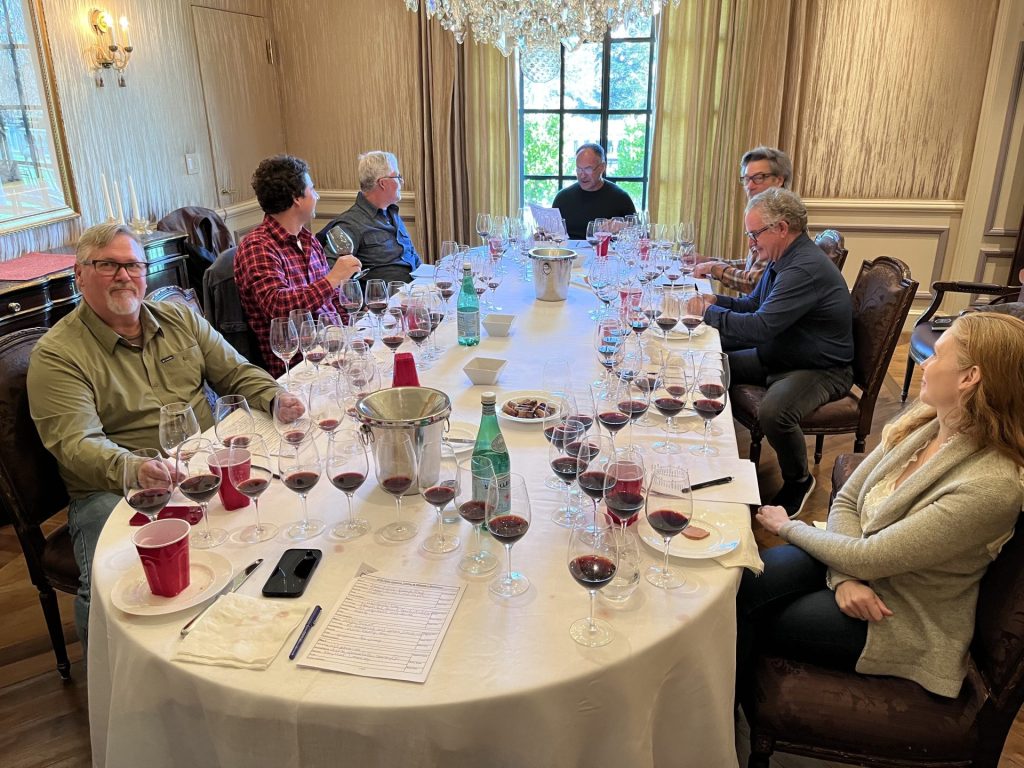
A pause in the action for a quick photo. At this point we’ve quietly tasted and made notes on 5 of the 11 wines. In this tasting, I invited some of my favorite colleagues from the wine world – winemakers, collectors, customers, and consultants. But I forgot to ask permission this time around, so I am afraid I cannot identity most of them.
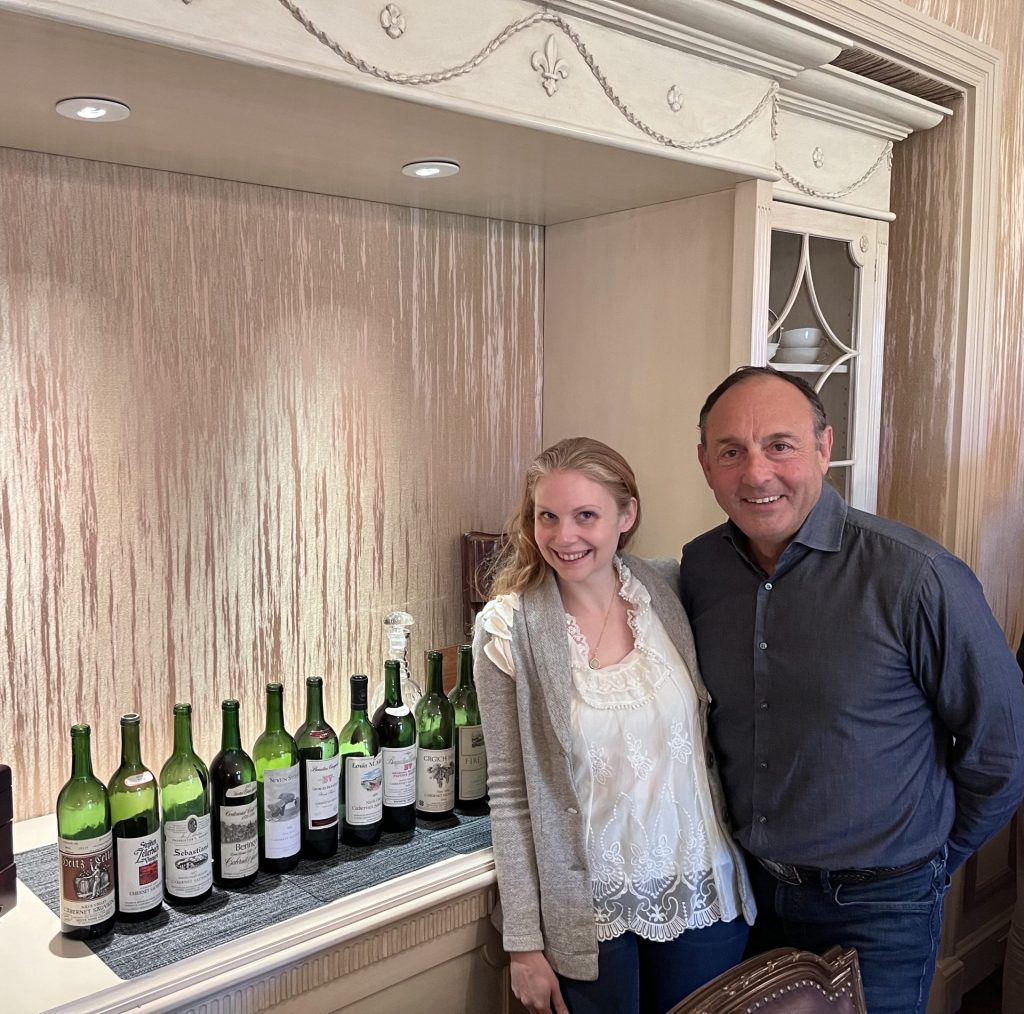
Having a laugh: Stacey Clarke, Principal owner of Treehouse (the brand development company behind the spring 2023 launch of our Sonocaia estate Sagrantino) and me, Ken Wornick (Sonocaia, Dysfunctional Family, and Hydeout)
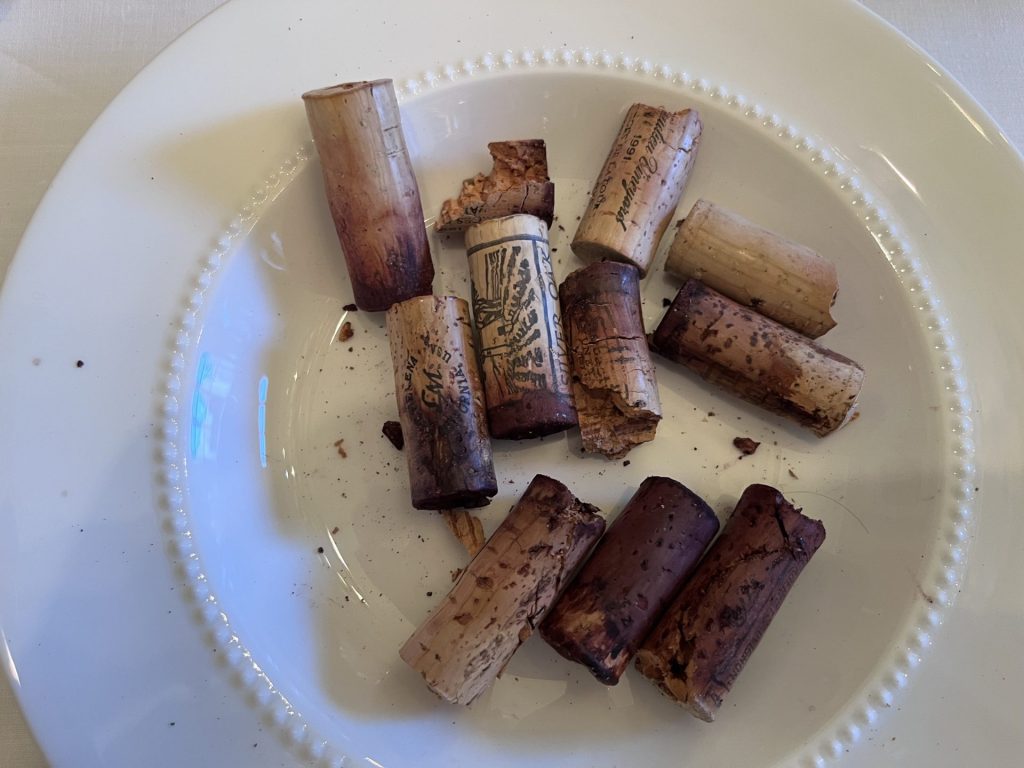
Many of the old corks were in very fine shape, likely due to the quality of the producers, and the excellent storage history, but a few disintegrated on contact and had to be very carefully extracted and wine decanted.
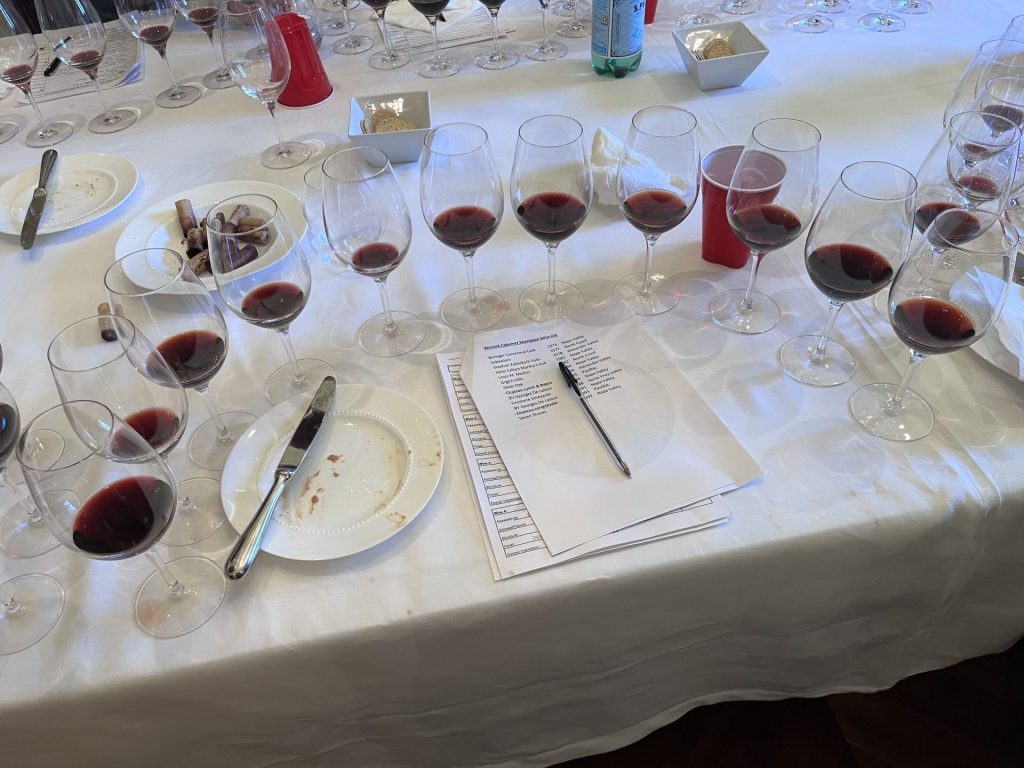
11 wines lined up and quietly tasted blind. Then tasters were supplied with a list of 13 wines, out of order, and had to guess which 11 wines were which.
Honorable mention – one of our winemaking colleagues brought a Hudson Valley Torchon Of Foie Gras (see the empty plate). It went so perfectly with our tasting. Also of note, the ducks are apparently not stuffed with feed (as with days of old). Their website says – the Moulard is a cross between the white farm duck, the Pekin, and a South American duck, the Muscovy. The Pekin has a mild flavor; the Muscovy, a gamy flavor. When the two breeds are crossed, they produce a high quality, deliciously unique flavor sought after by the finest chefs worldwide. Moulard ducks have a special ability to store fat in the liver. Like the Muscovy, they are ground-foraging ducks. Moulards don’t fly and are not fans of open water. These characteristics make the Moulard the ideal breed for producing foie gras.. The website says: Don’t Sweat the technique! The Torchon of Foie Gras is the ultimate cold preparation. Translating to “Towel” in French, its name is a result of the preparation method where the Foie Gras was traditionally tied in a kitchen towel, rolled, poached, and hung to chill for several days. The torchon of Foie Gras is a labor of love that we have refined for your convenience and enjoyment. Its cylindrical shape makes for an easy and impressive slice & serve that is guaranteed to delight.
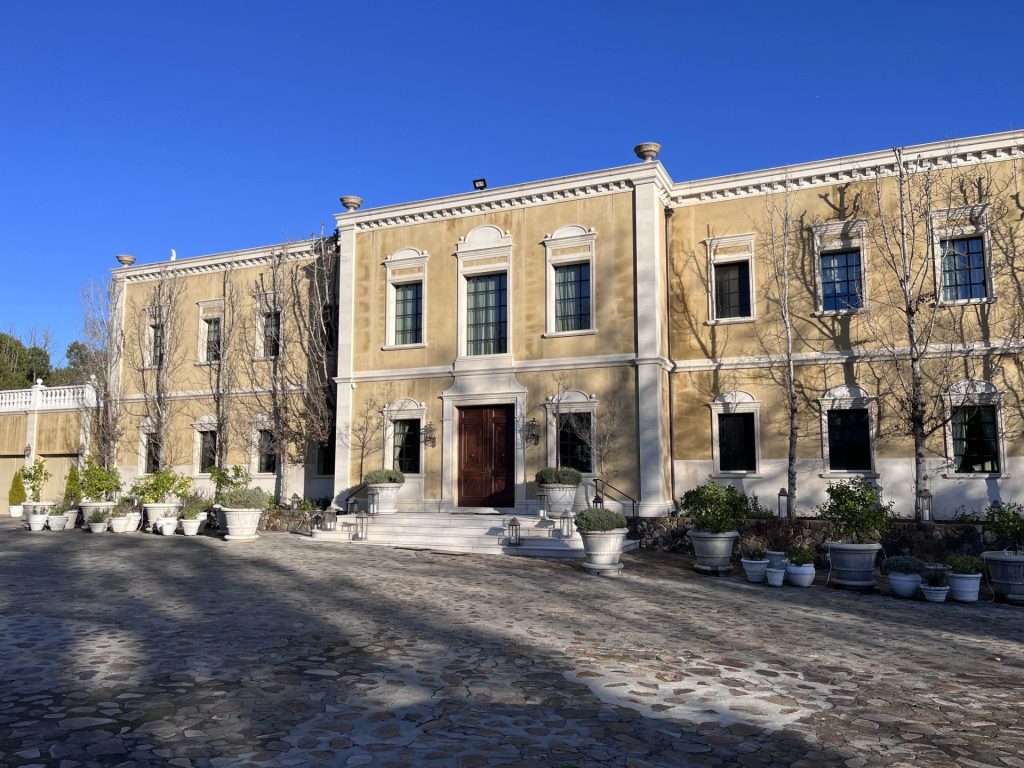
The scene of the crime, the home of our very gracious host, Don Sebastiani Sr. of Sonoma. My thanks as always to Keith Casale, CFO of Landers Curry, who assisted Don (and me) in organizing this tasting.
Chicken Murder, Bobcat style
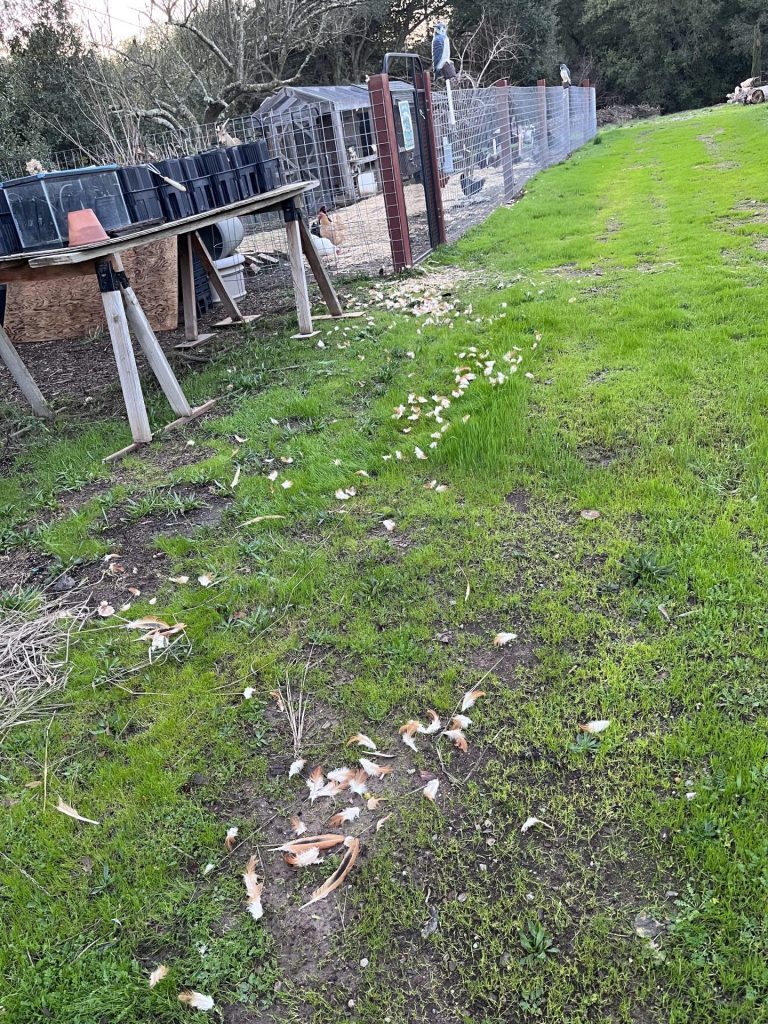
Went for the usual collection of chicken eggs at dusk, found this sad scene of feathers but no chicken – one of the most productive and peaceful of our flock – a Buff Orpington chickens was killed. Looks like it was pulled through a hole in the fence and dispatched just outside the coop door. This might be the first time a bobcat has taken a chicken. For us, it’s usually the hawks.
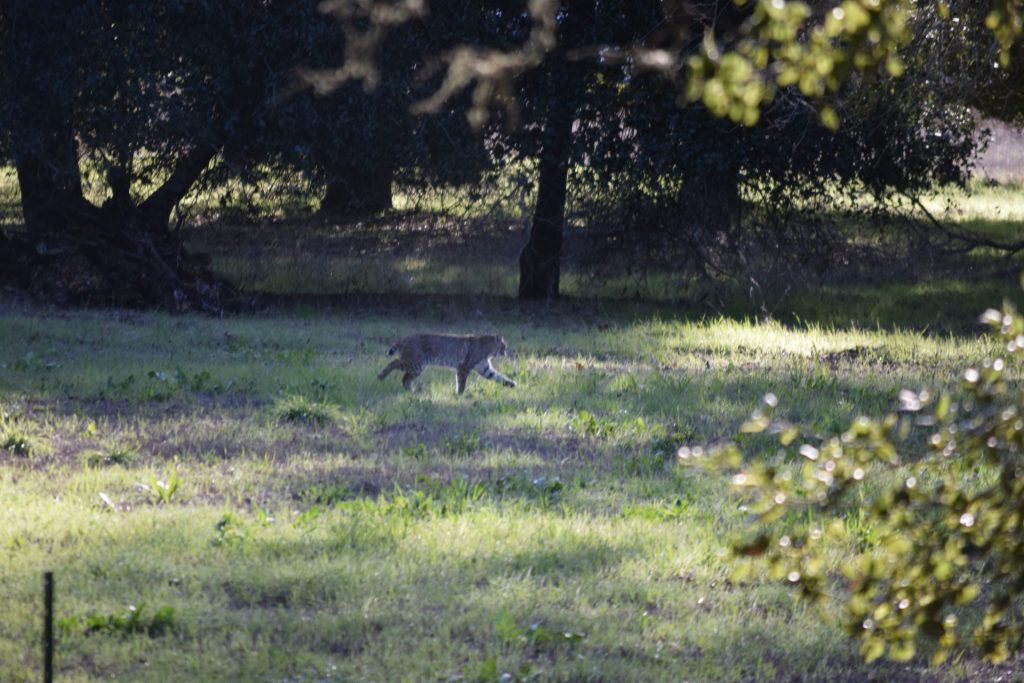
The likely fugitive from justice, a really gorgeous Bobcat crossing from the chicken coop to the vineyard. Note the telltale striping on the front left leg.



















